Number Bonds Over 20 Worksheets
Making 100 with 2 Numbers (A) (Multiples of 10)
Year groups: 2
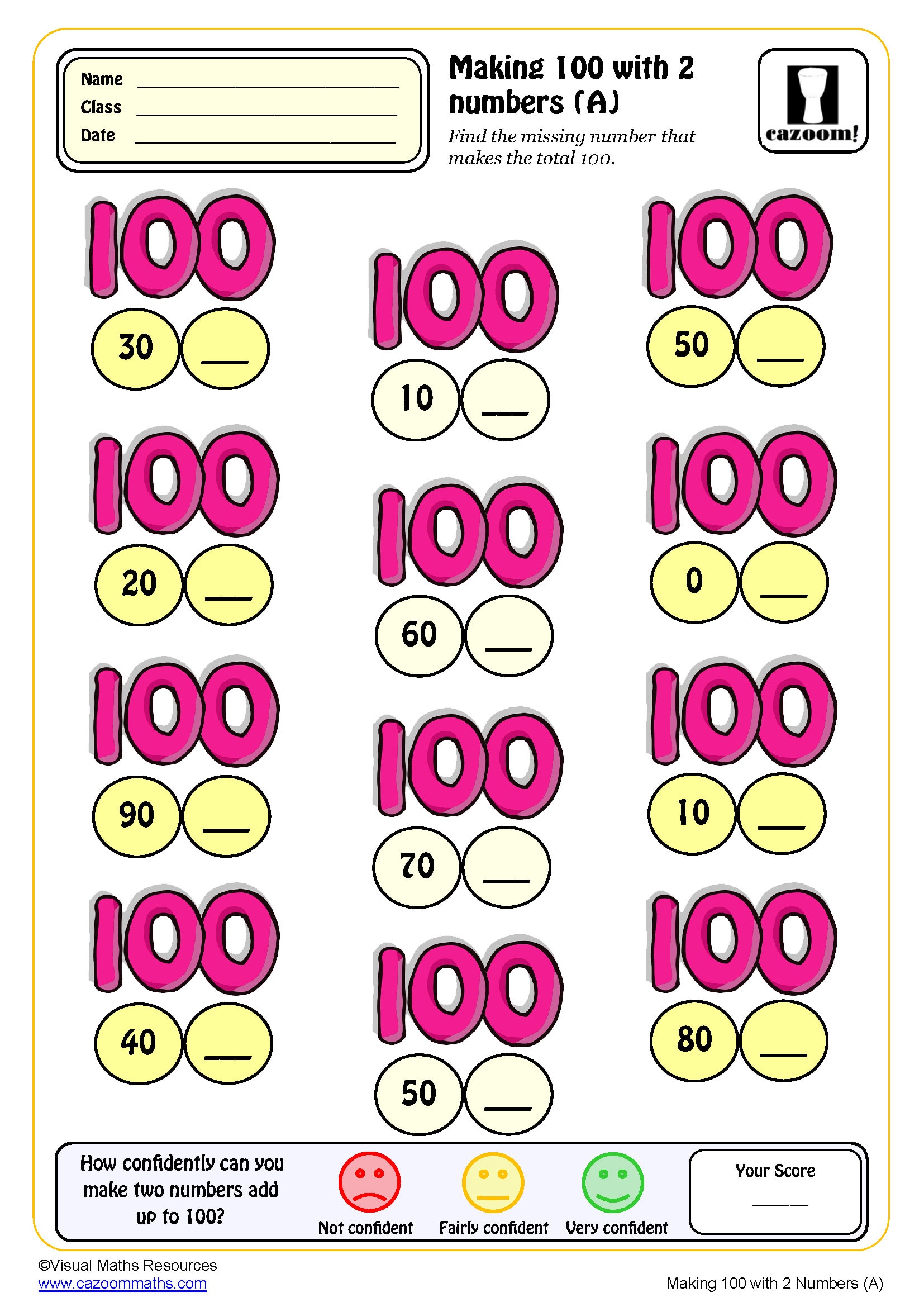
Making 100 with 2 numbers (B) (Multiples of 5)
Year groups: 2
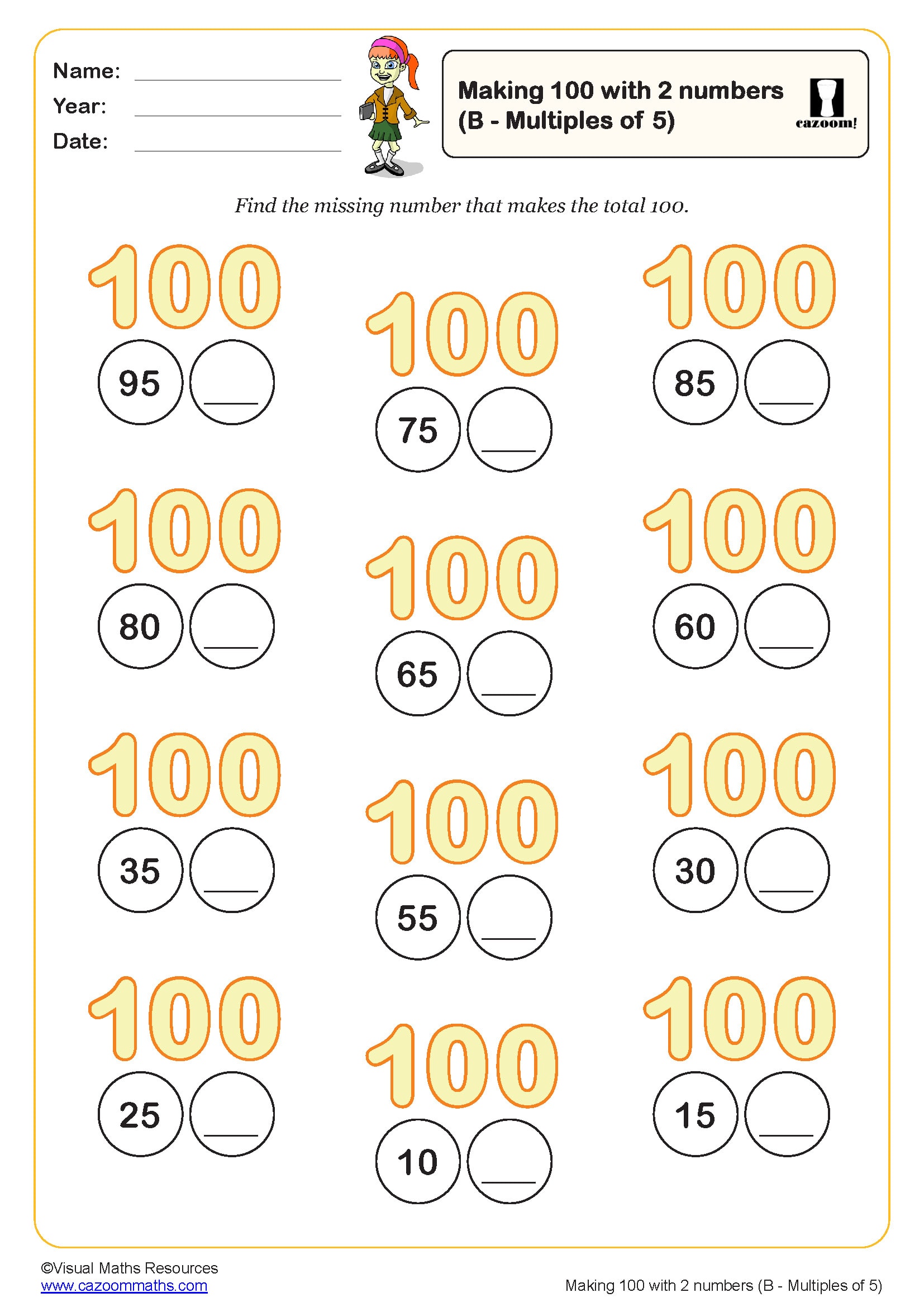
Making 100 with 2 numbers (blanks)
Year groups: 2
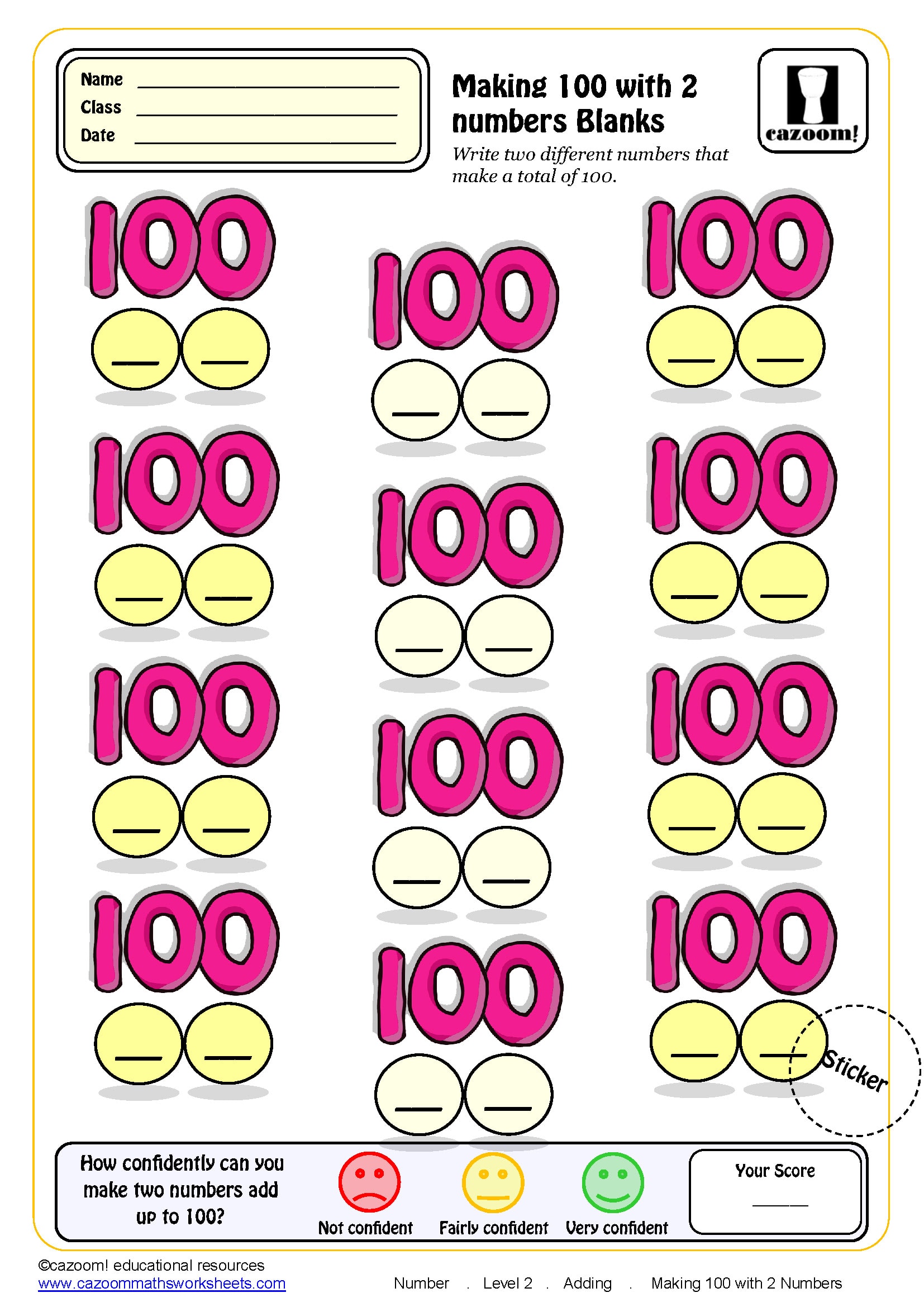
Making 100 with 2 numbers (C)
Year groups: 2
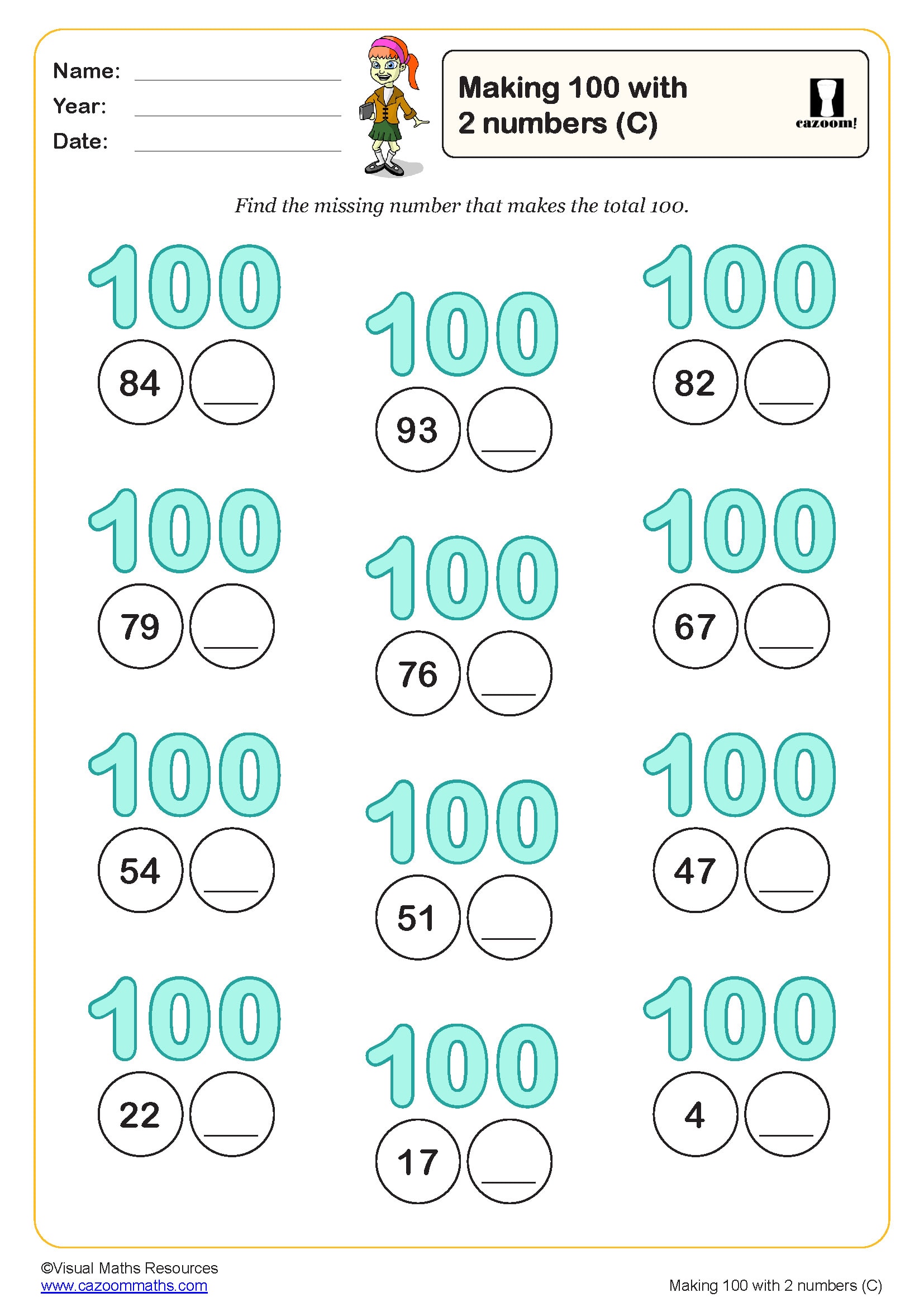
Making 100 with 3 Numbers (A) (Multiples of 10)
Year groups: 2
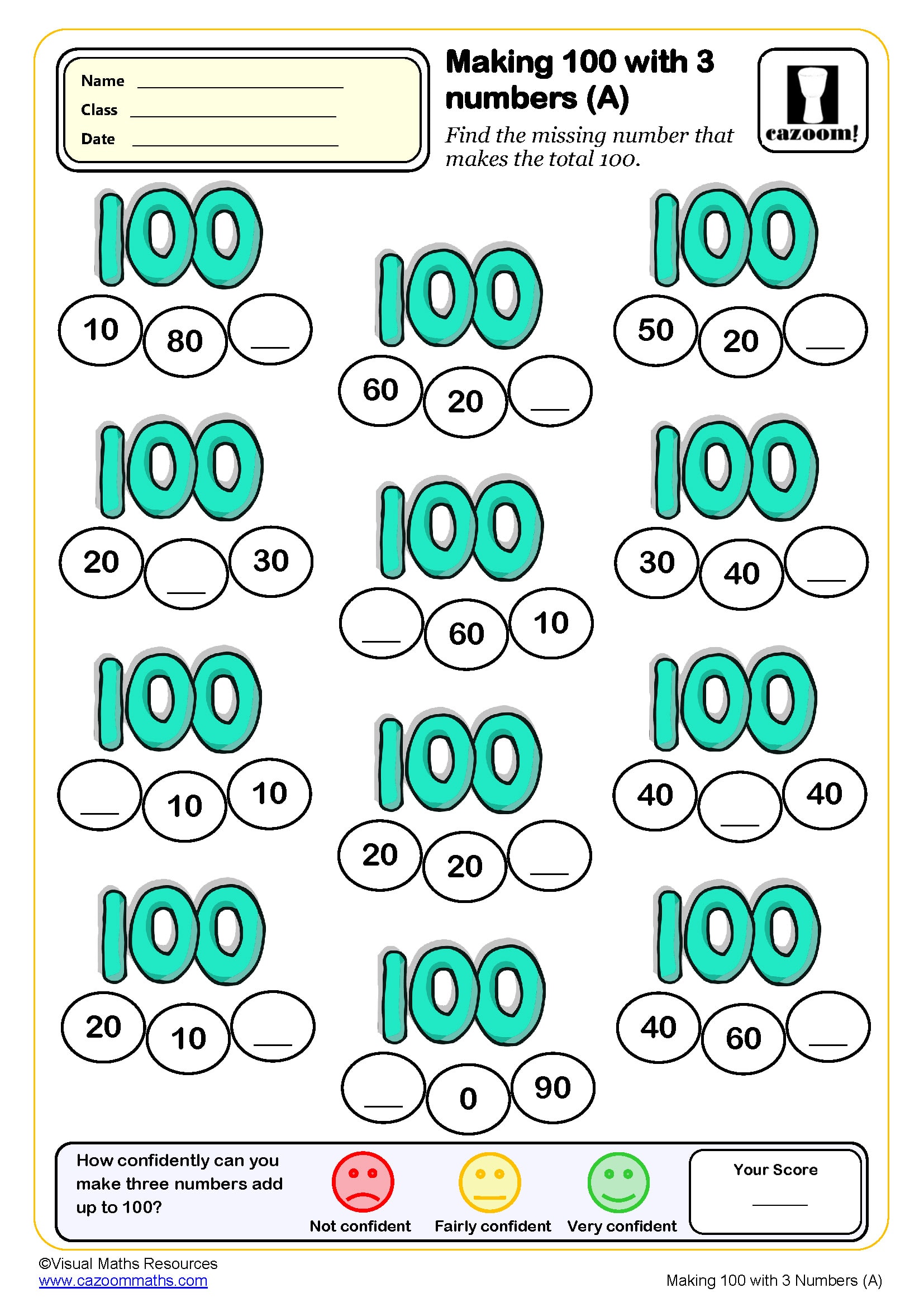
Making 100 with 3 numbers (B) (Multiples of 5)
Year groups: 2
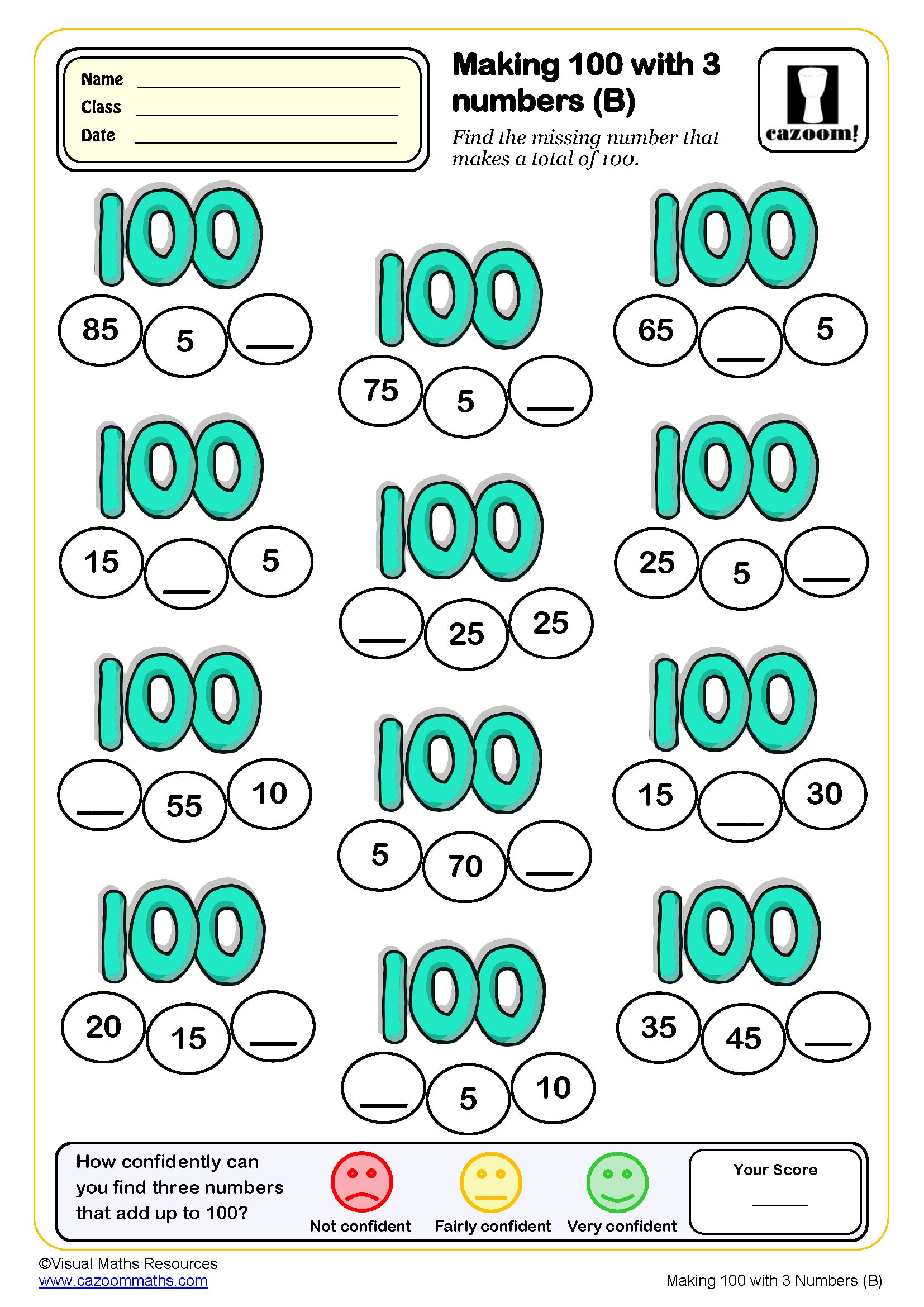
Making 100 with 3 numbers (blanks)
Year groups: 2
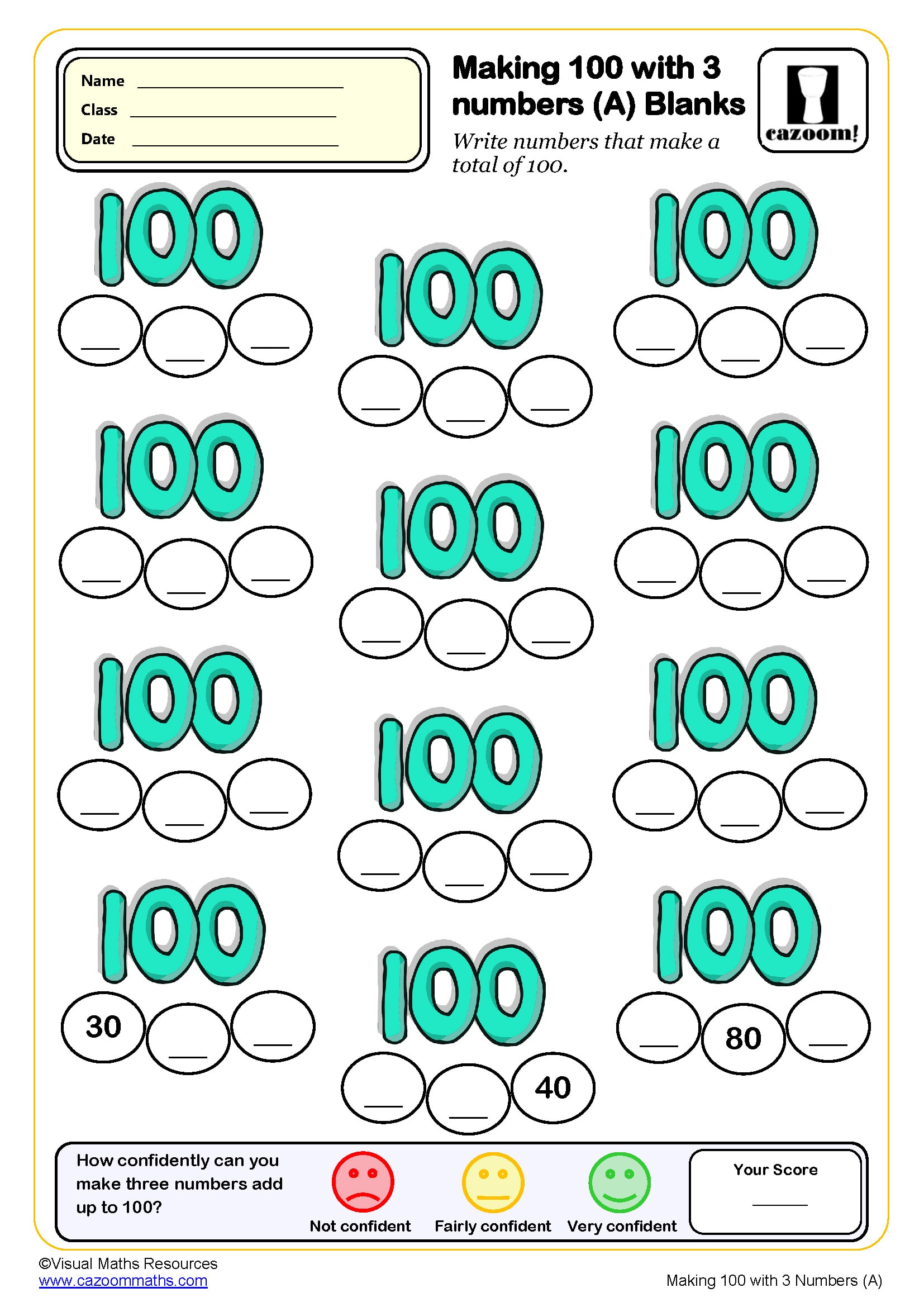
Making 100 with 3 numbers (C)
Year groups: 2
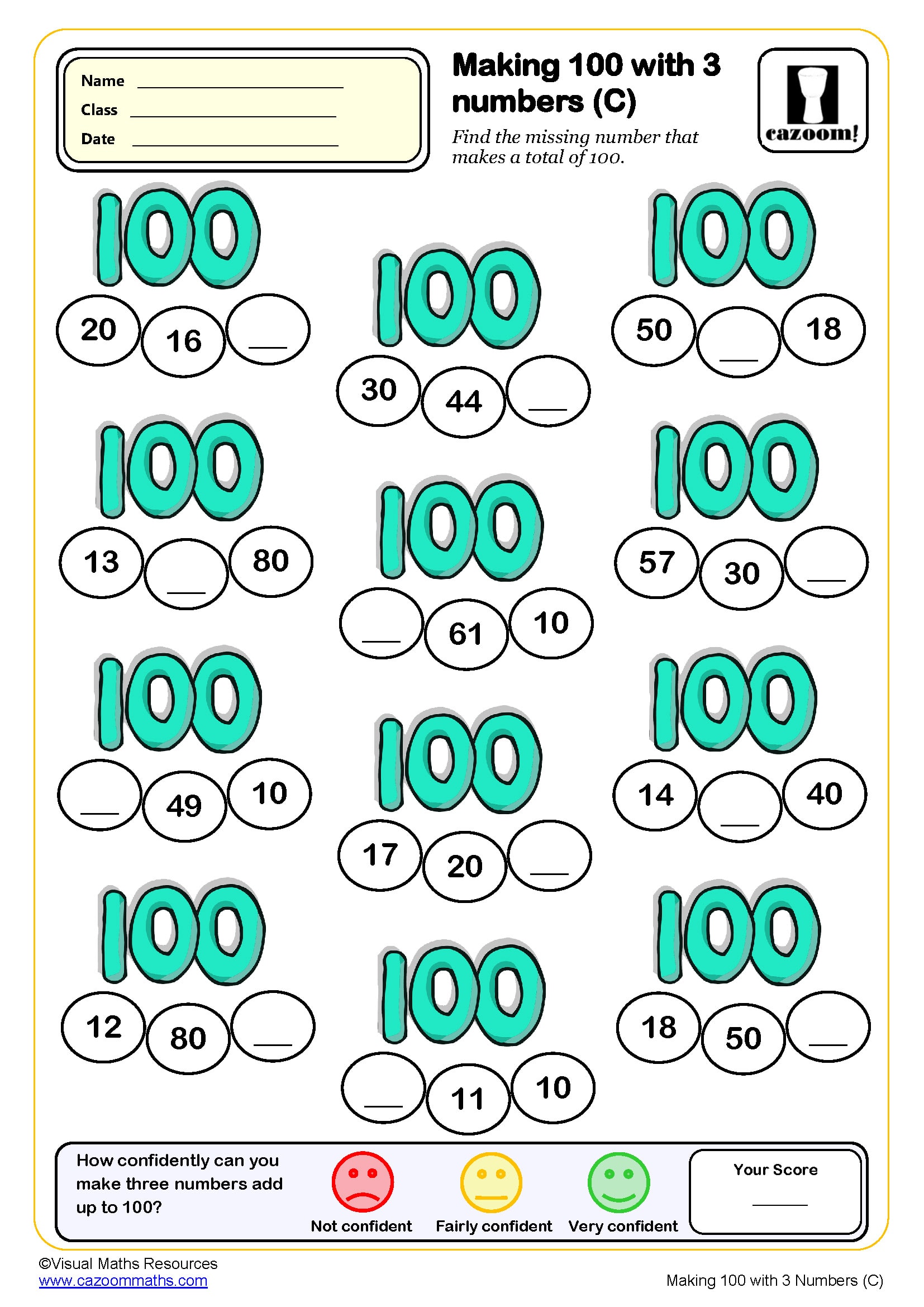
Making 100 with 3 numbers (D) (No regrouping)
Year groups: 2
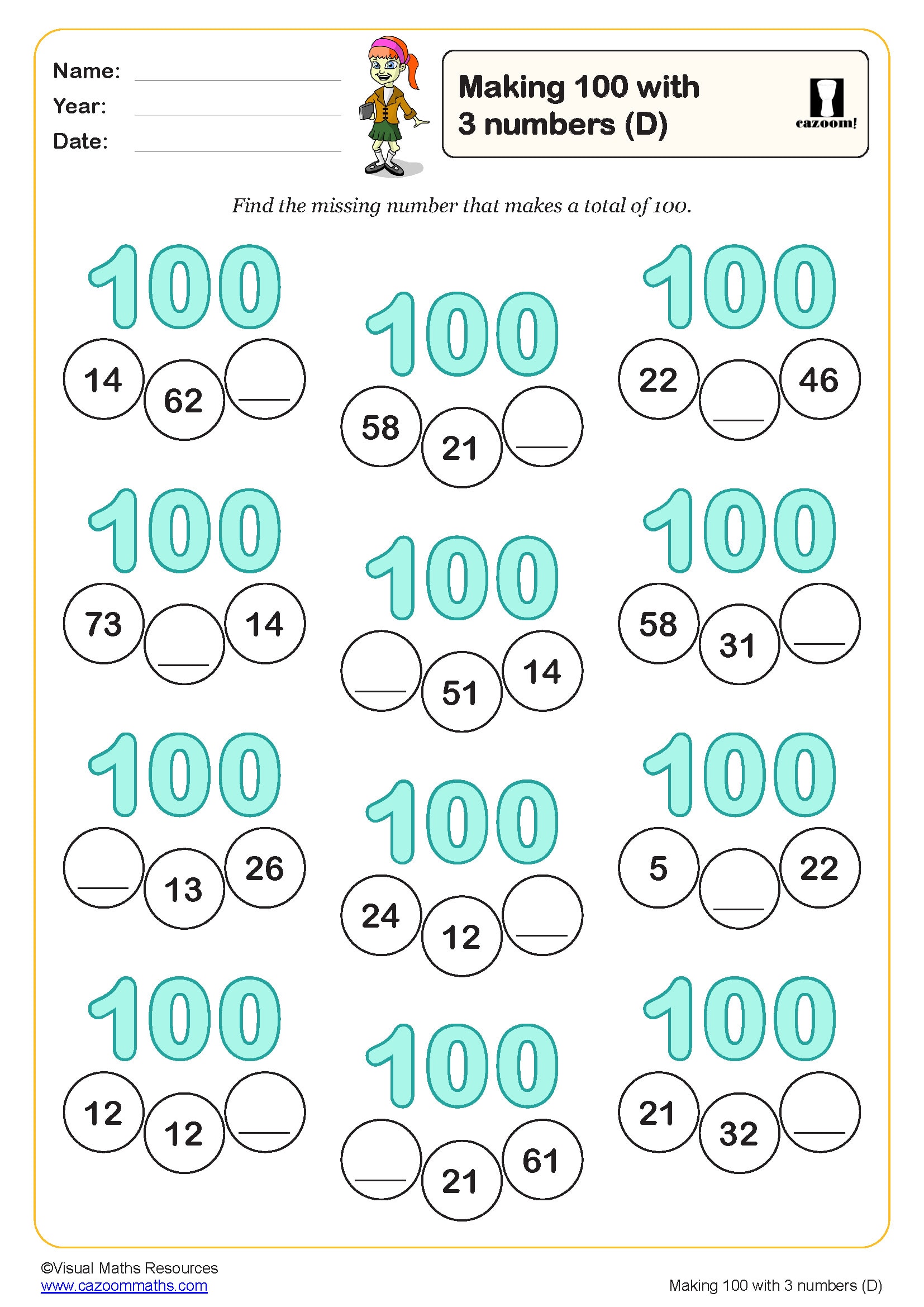
Making 100 with 3 numbers (E) (With regrouping)
Year groups: 2
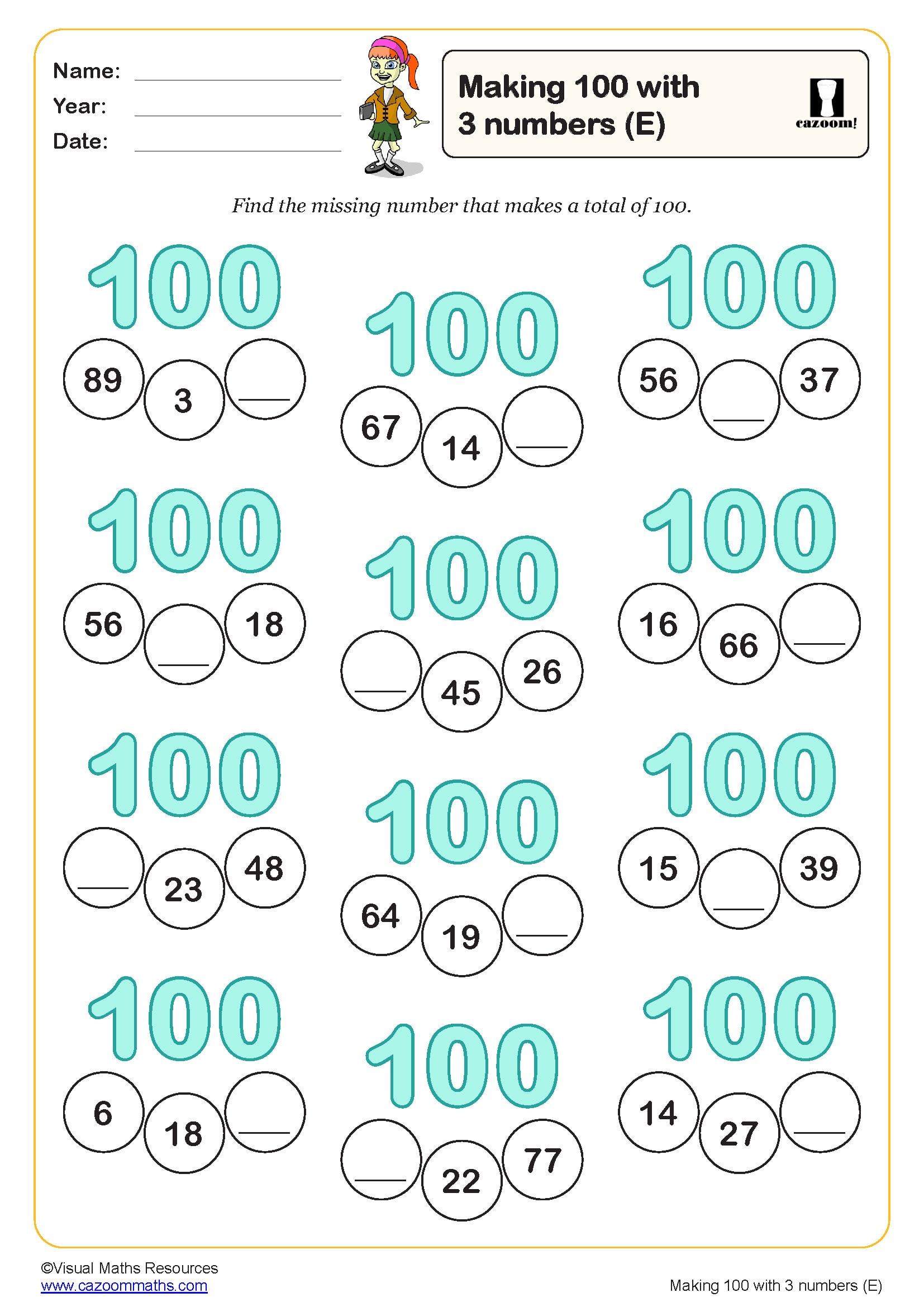
Making 25
Year groups: 2
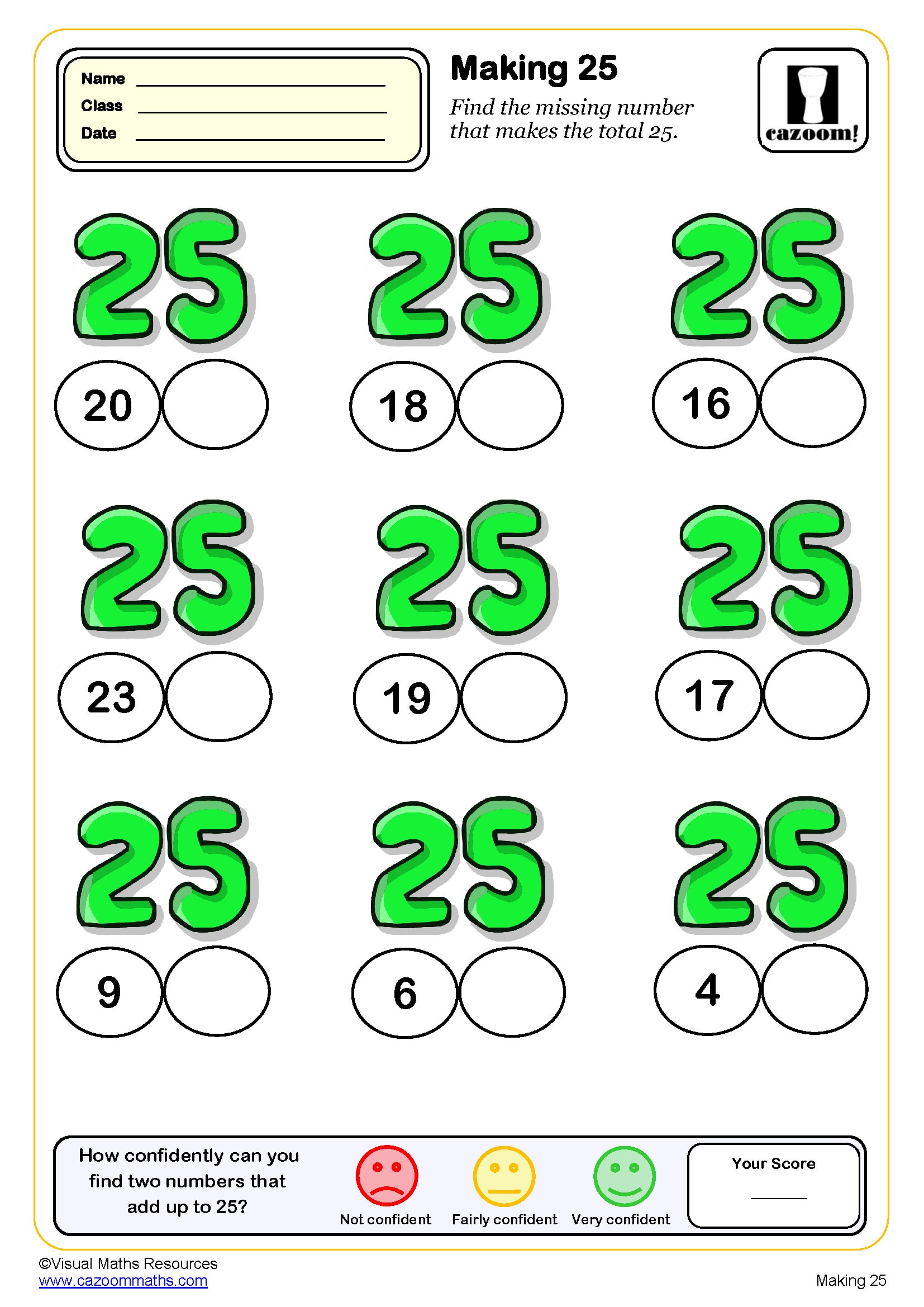
Making 25 (Blanks)
Year groups: 2
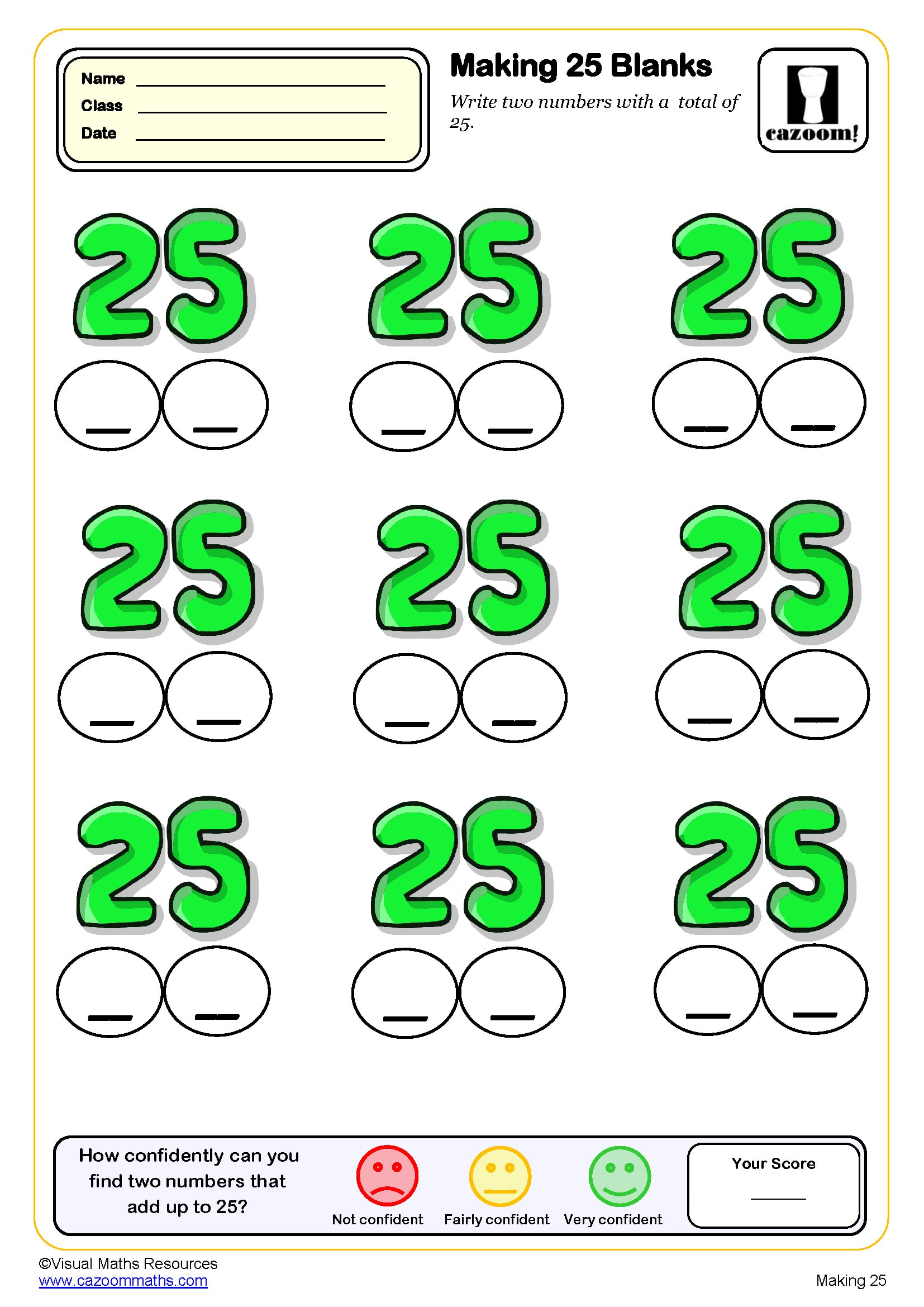
Making 28
Year groups: 2
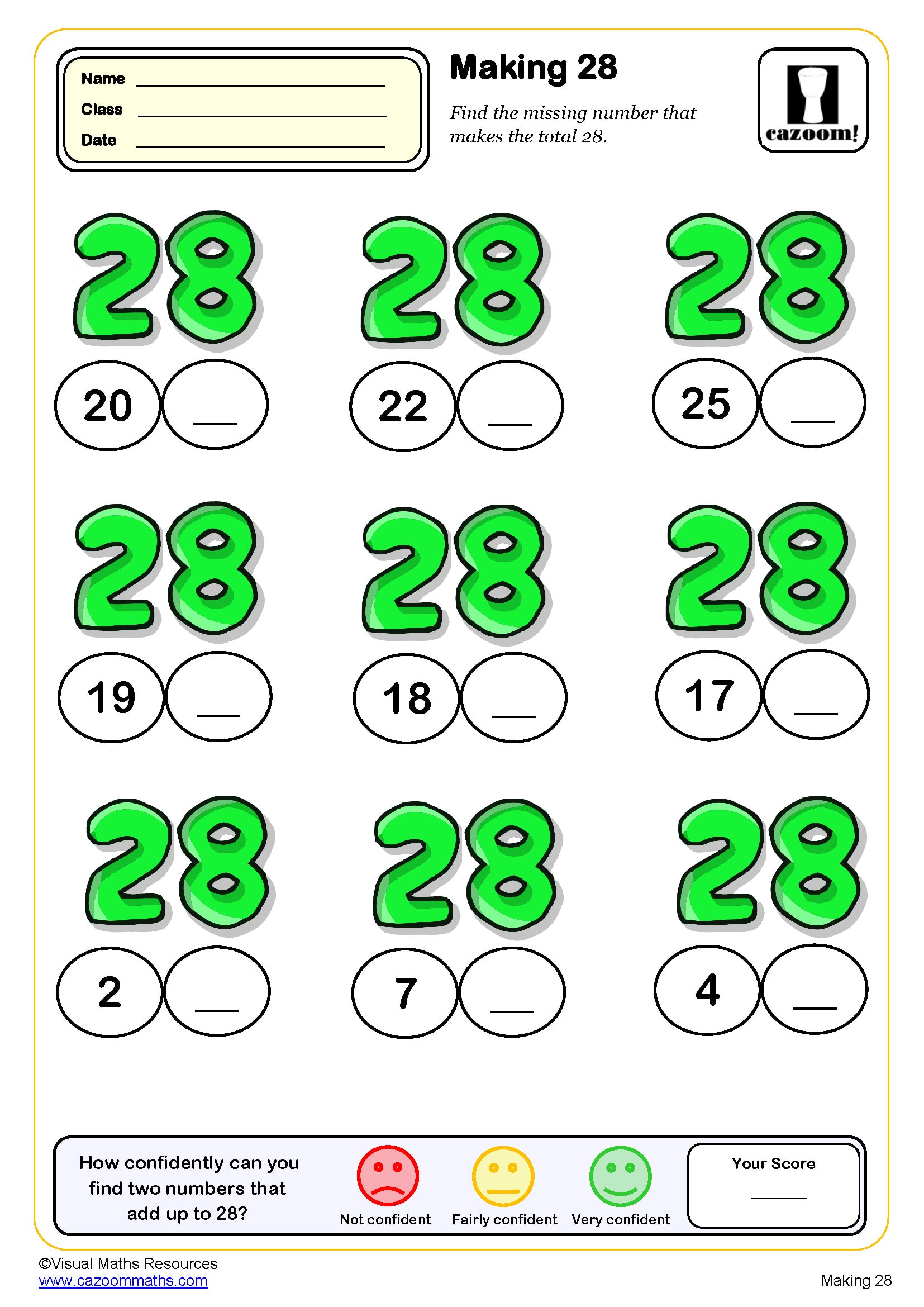
Making 28 (Blanks)
Year groups: 2
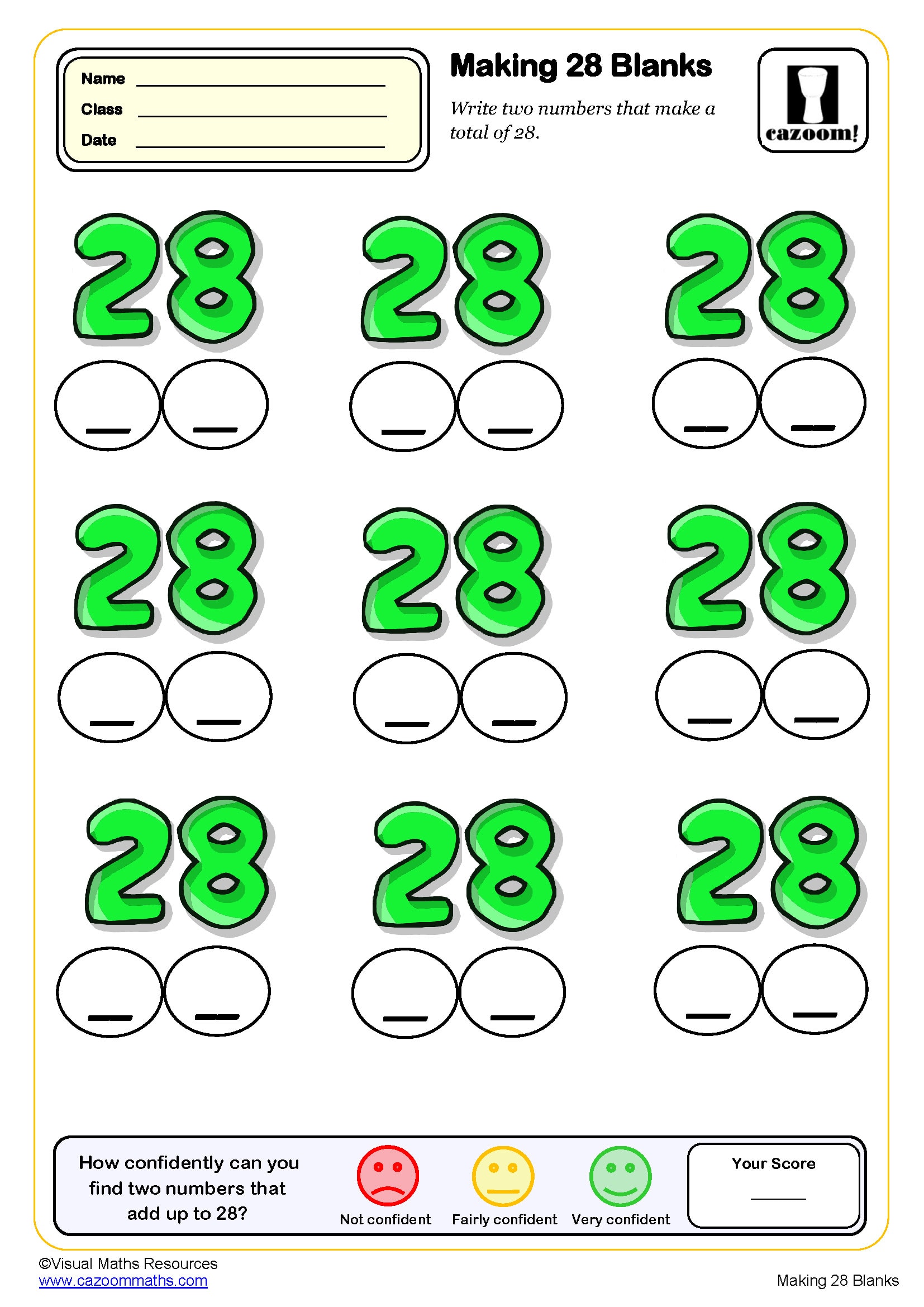
Making 35 with 2 numbers
Year groups: 2
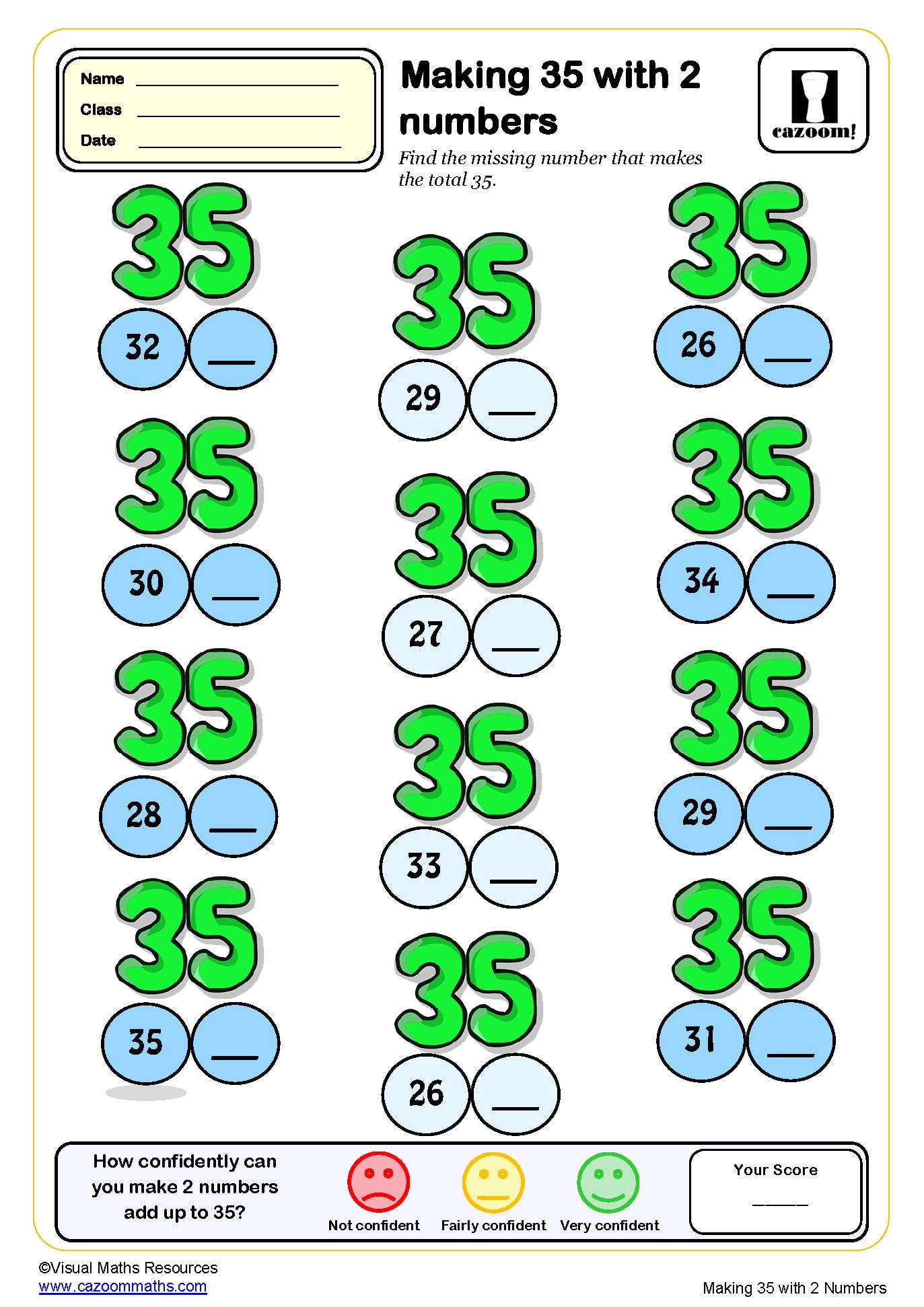
Making 35 With 2 Numbers (Blanks)
Year groups: 2
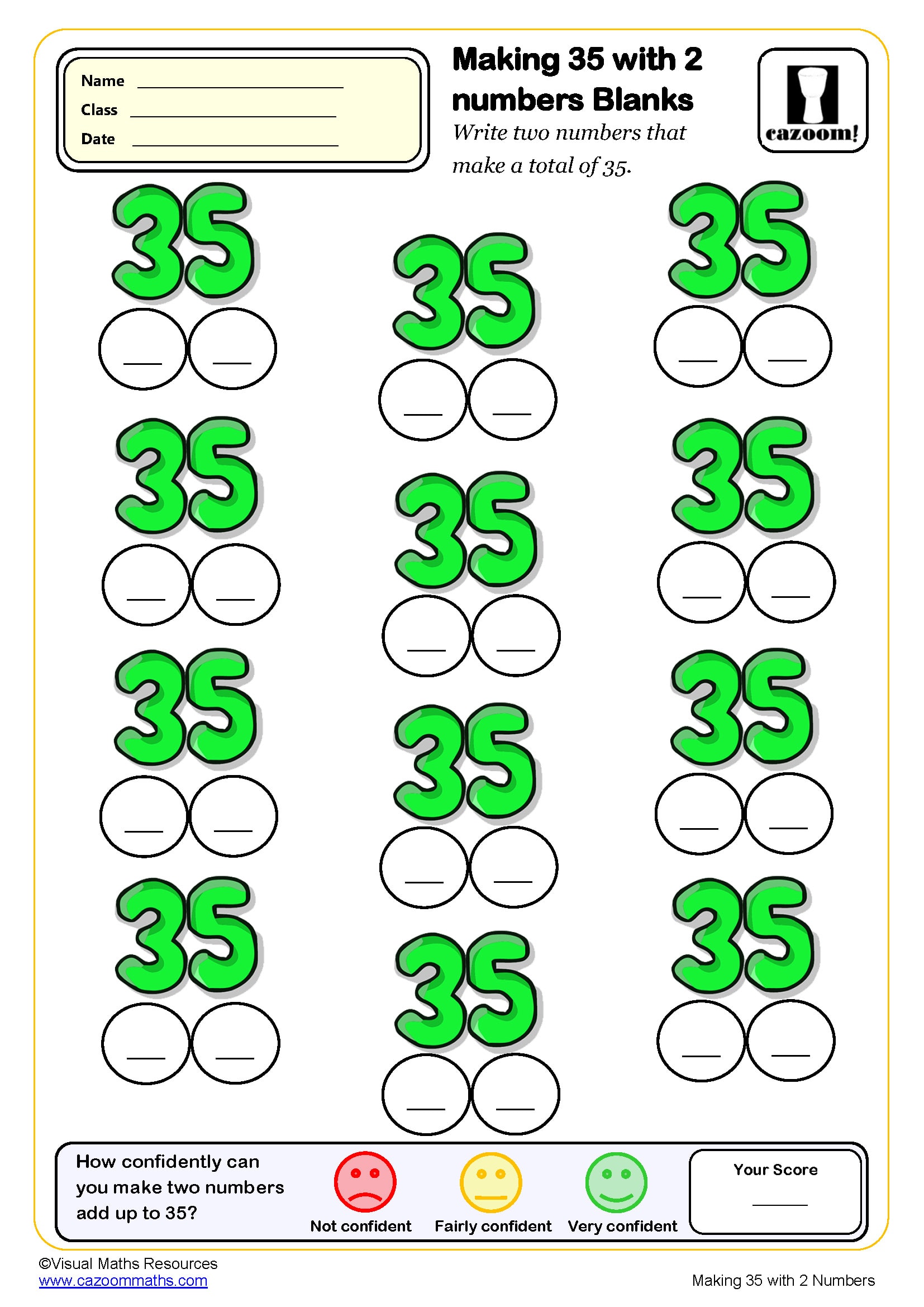
Matching sums to 100 (A)
Year groups: 2
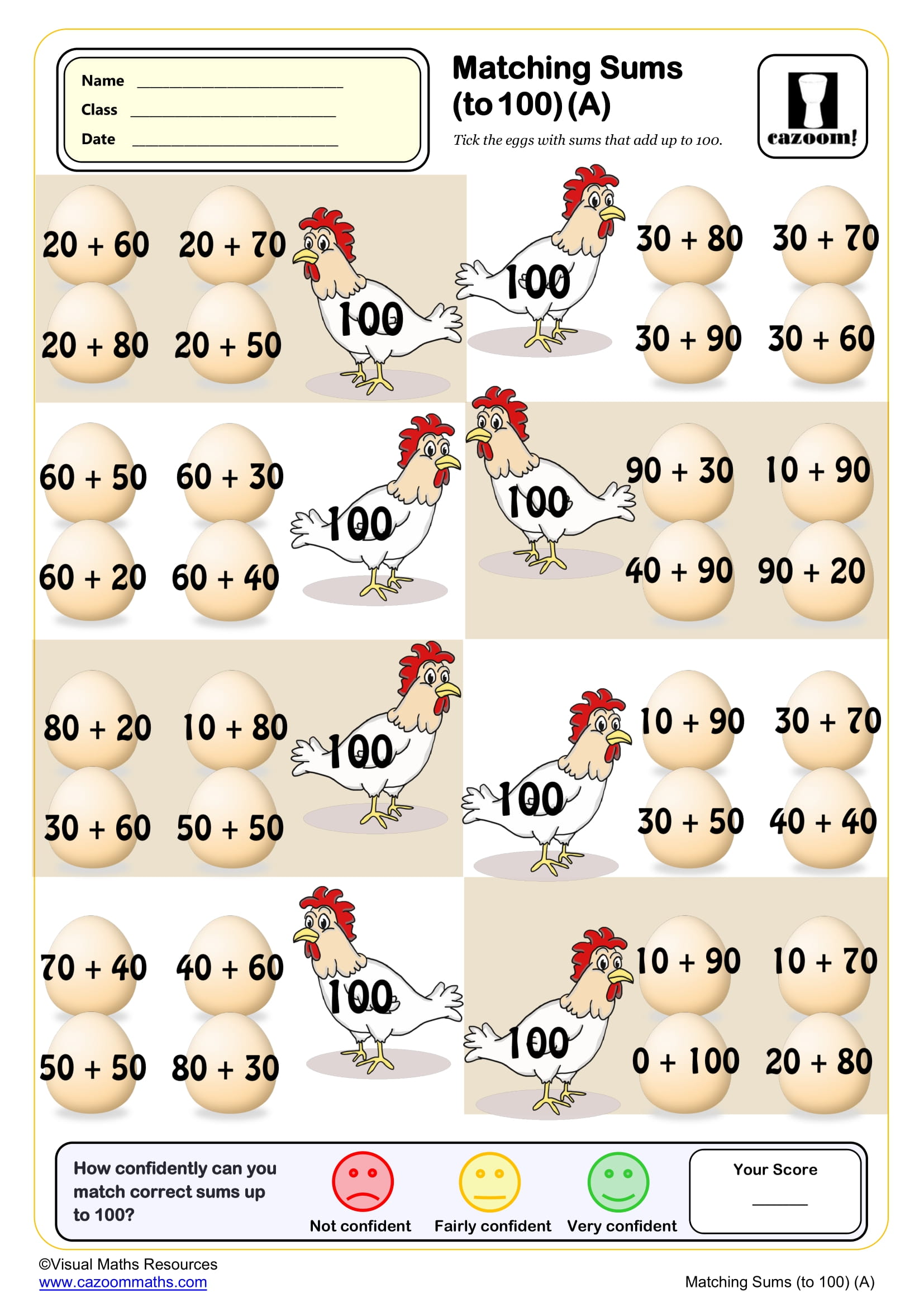
Matching sums to 100 (B)
Year groups: 2
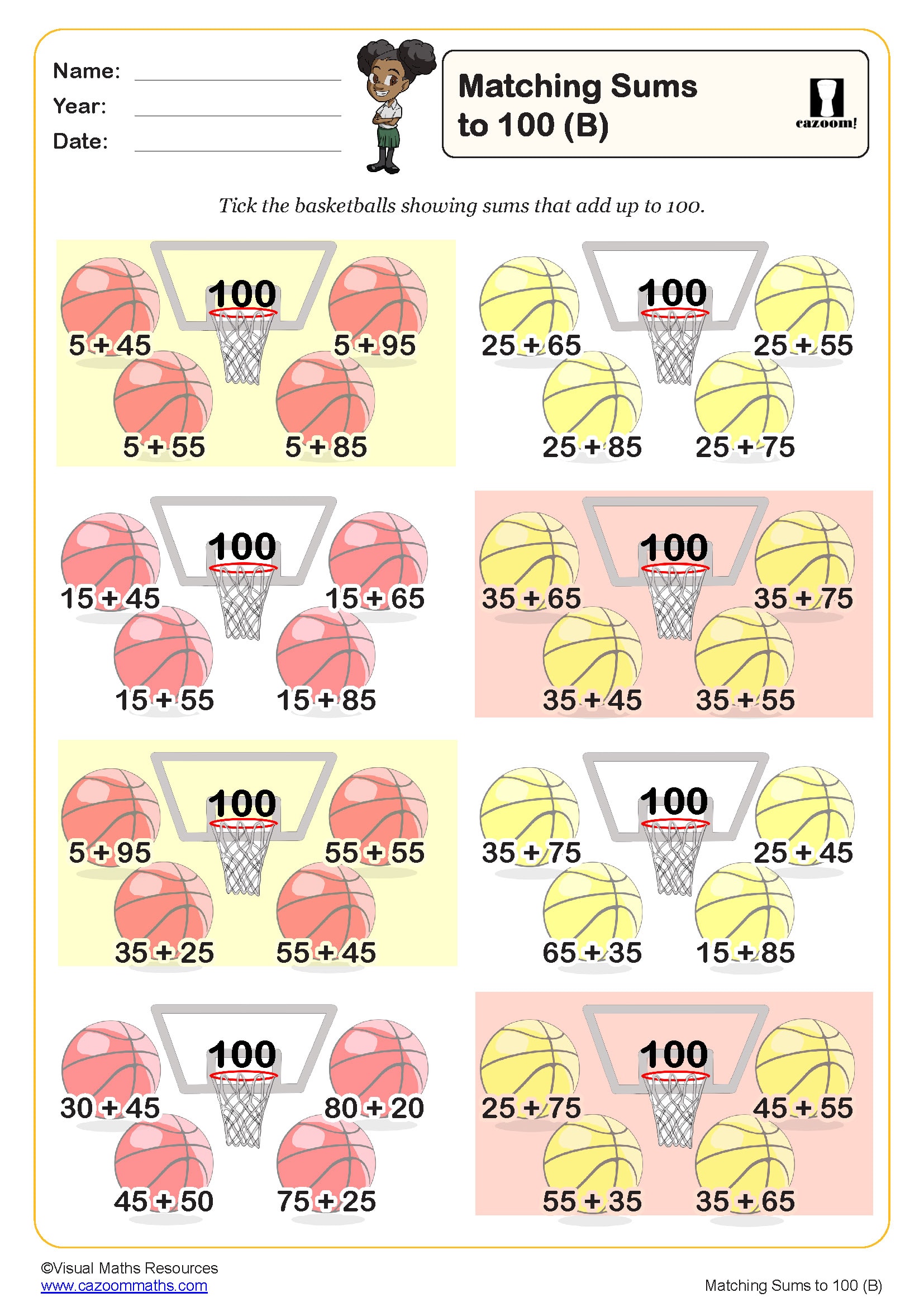
Matching sums to 100 (C)
Year groups: 2
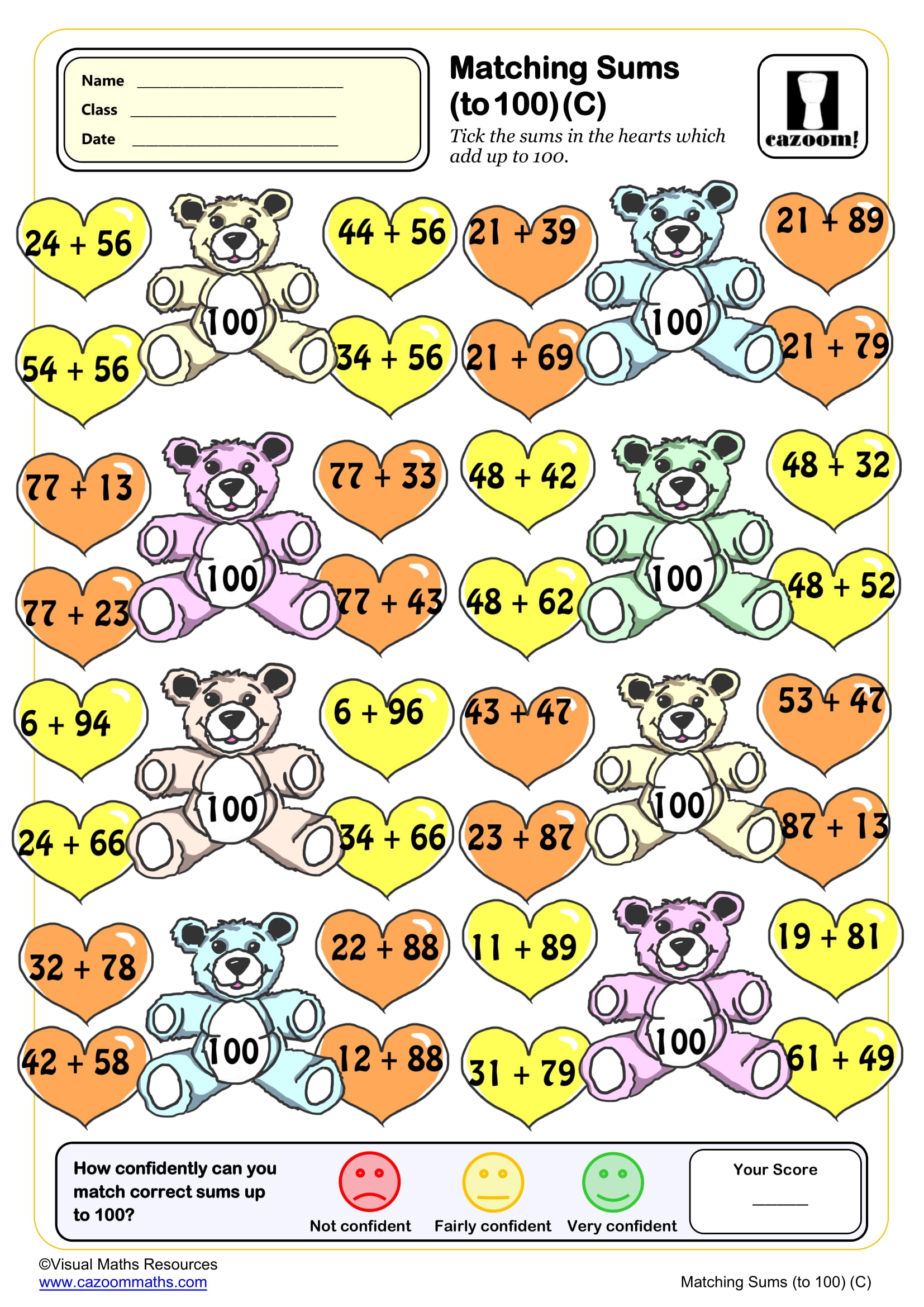
Number bond to 100 Drills (A) (10 questions)
Year groups: 2
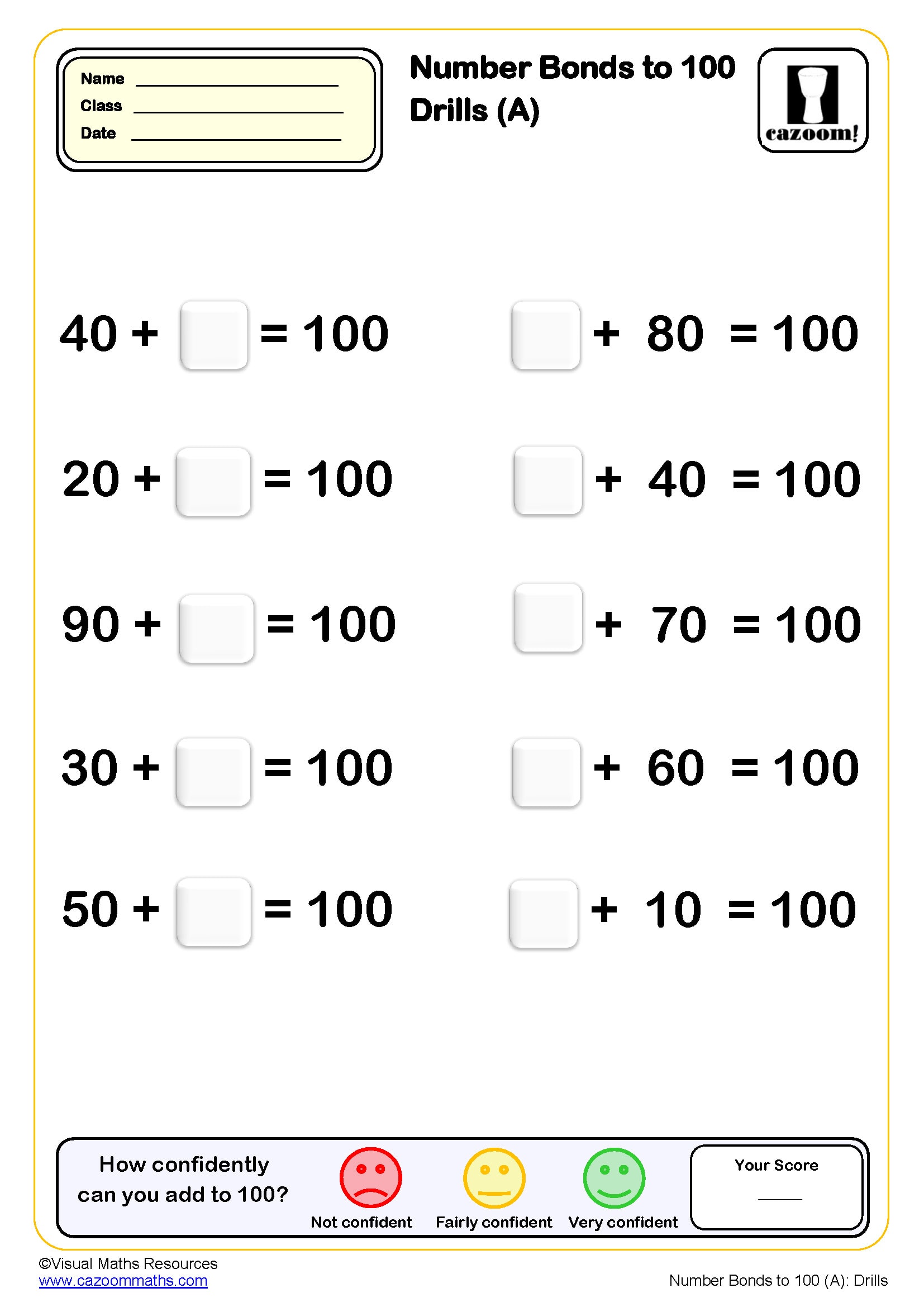
Number bond to 100 Drills (A) (20 questions)
Year groups: 2
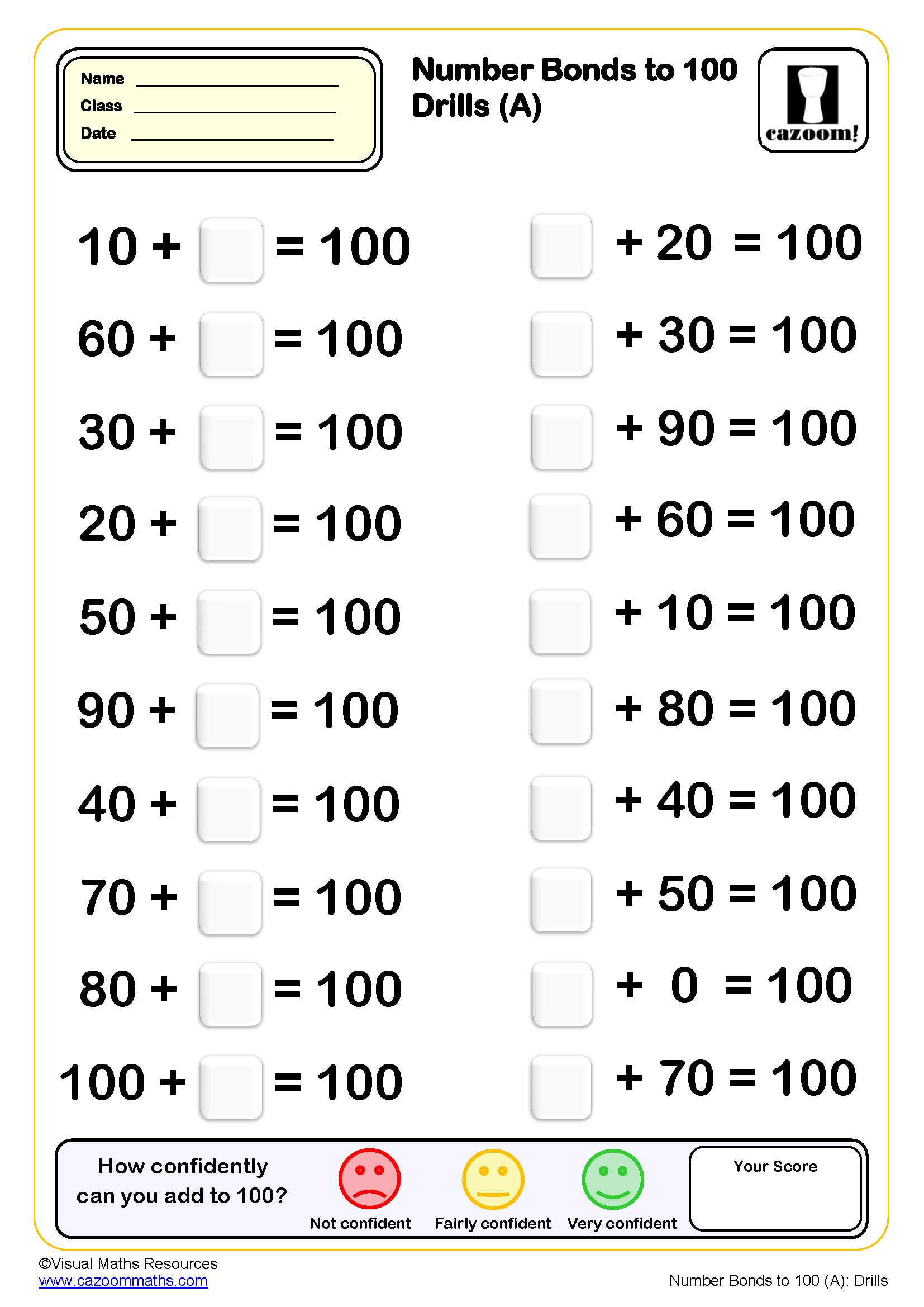
Number bond to 100 Drills (A) (50 questions)
Year groups: 2
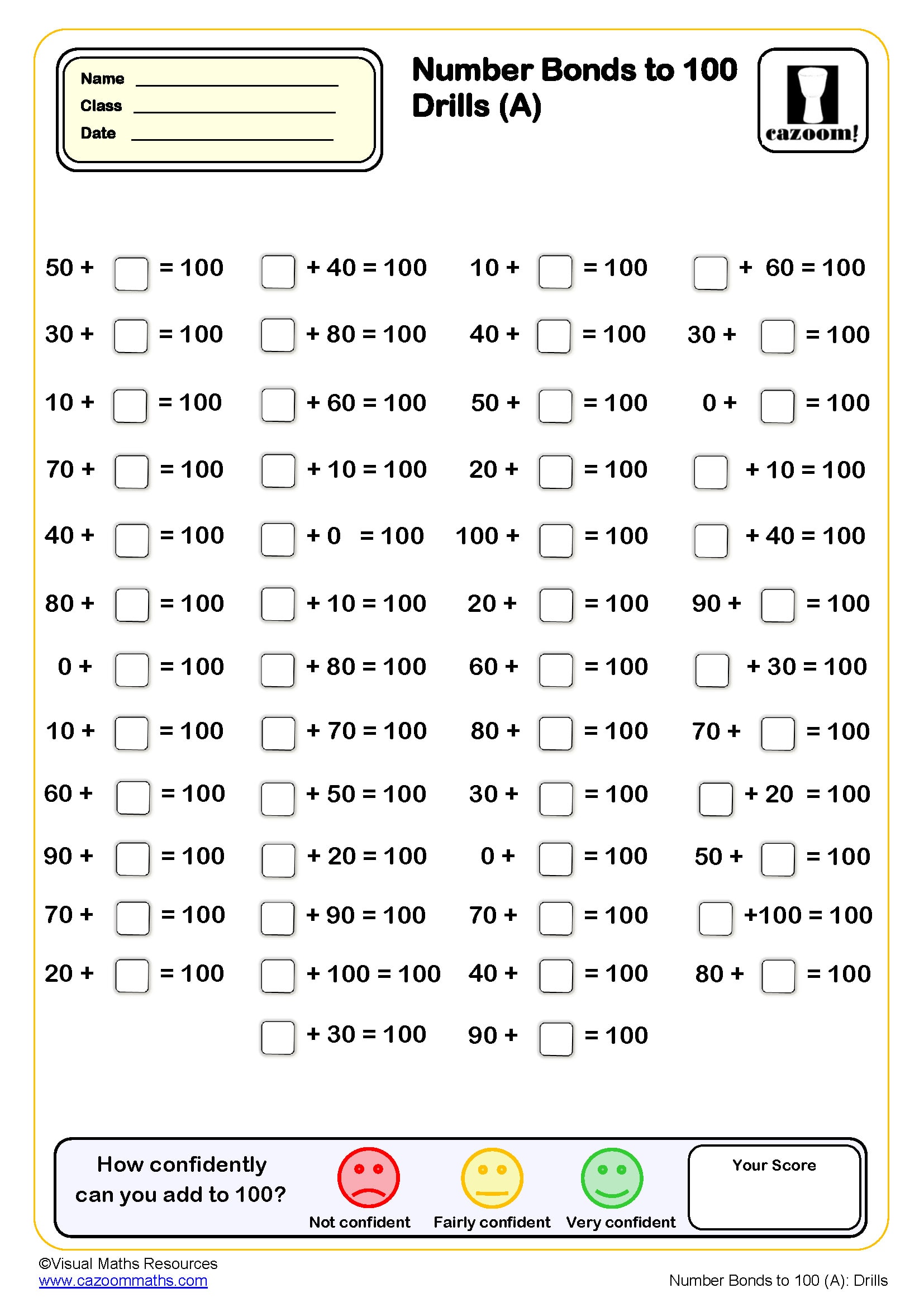
Number bond to 100 Drills (B) (10 questions)
Year groups: 2
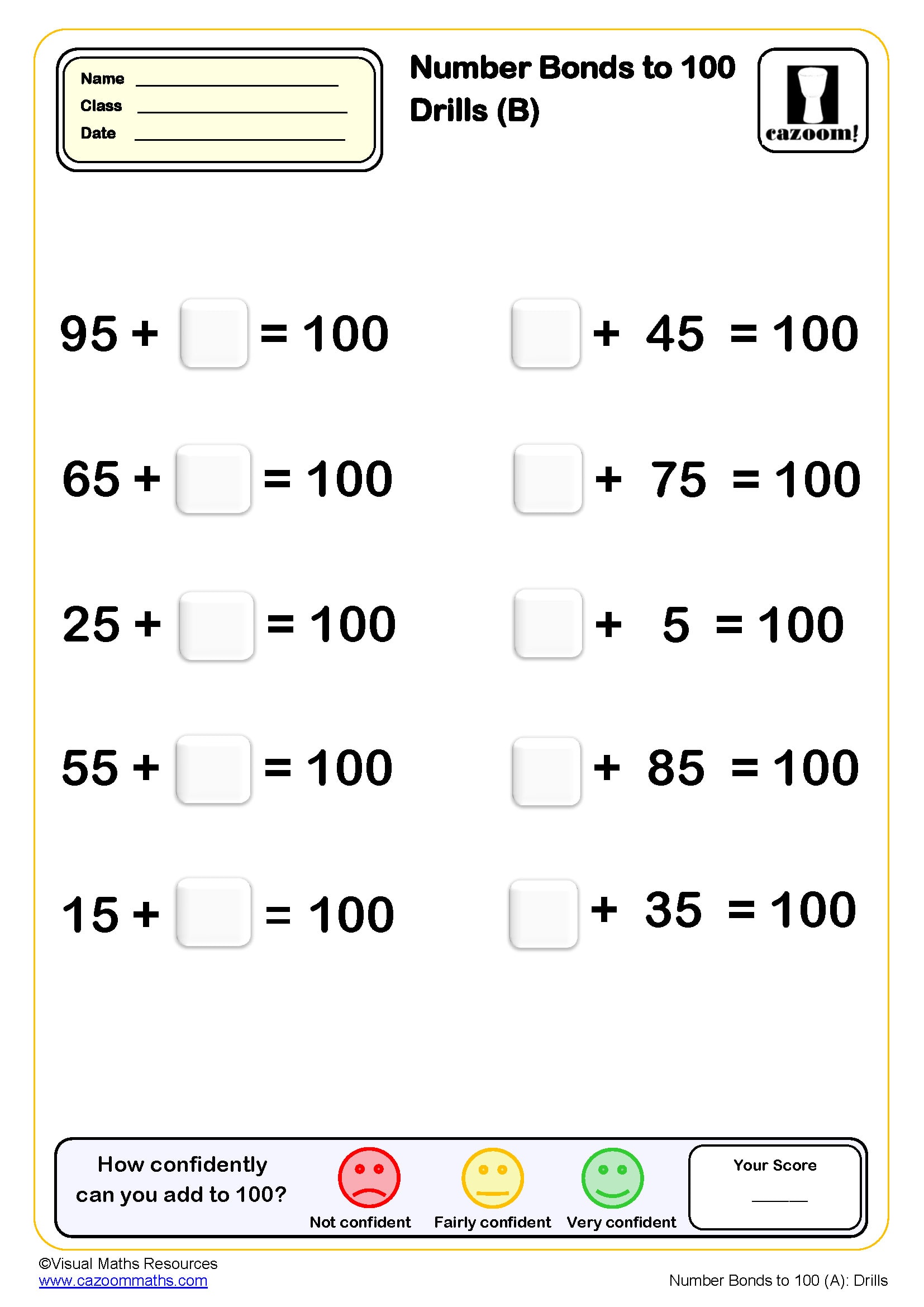
Number bond to 100 Drills (B) (20 questions)
Year groups: 2
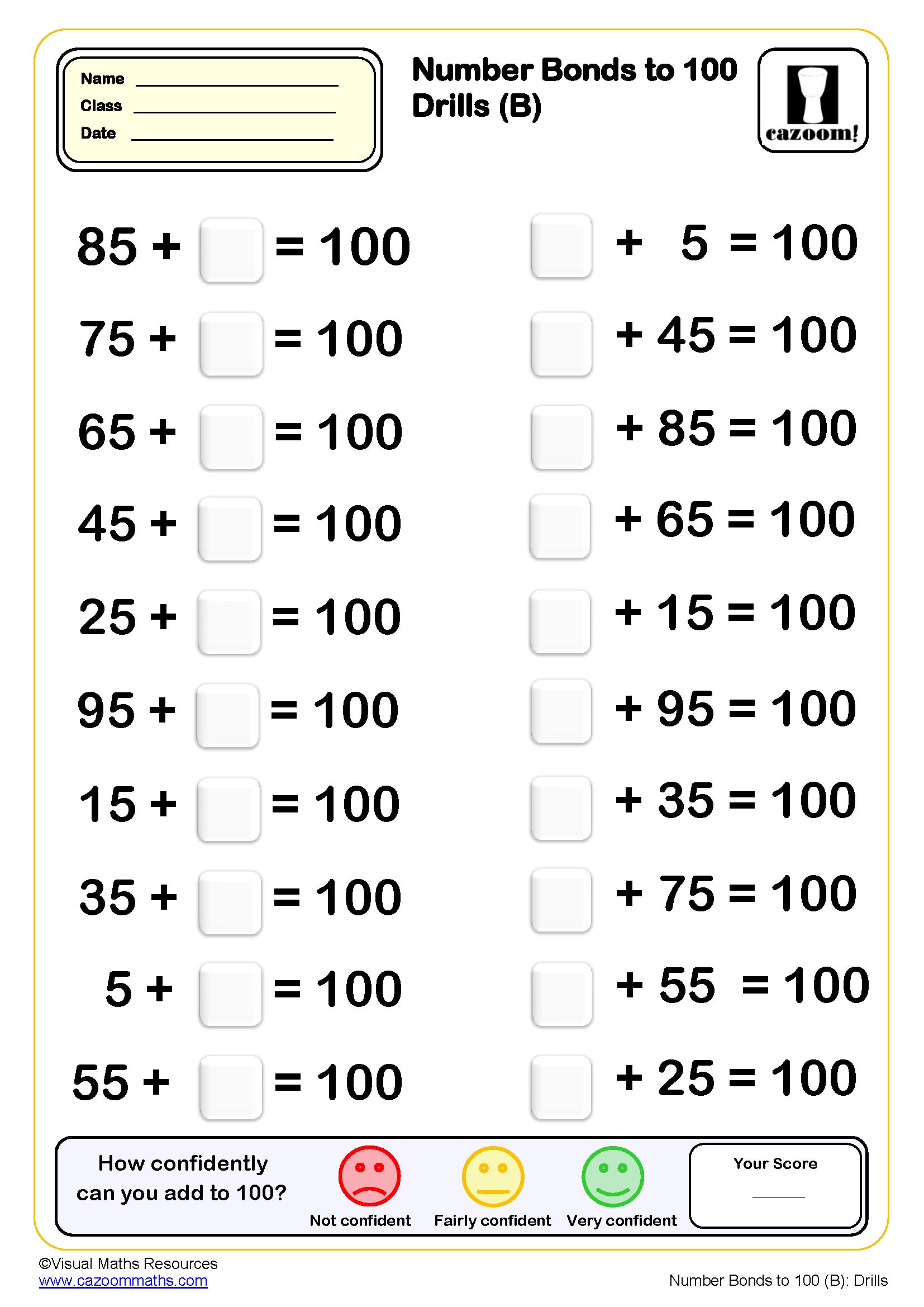
Number bond to 100 Drills (B) (50 questions)
Year groups: 2
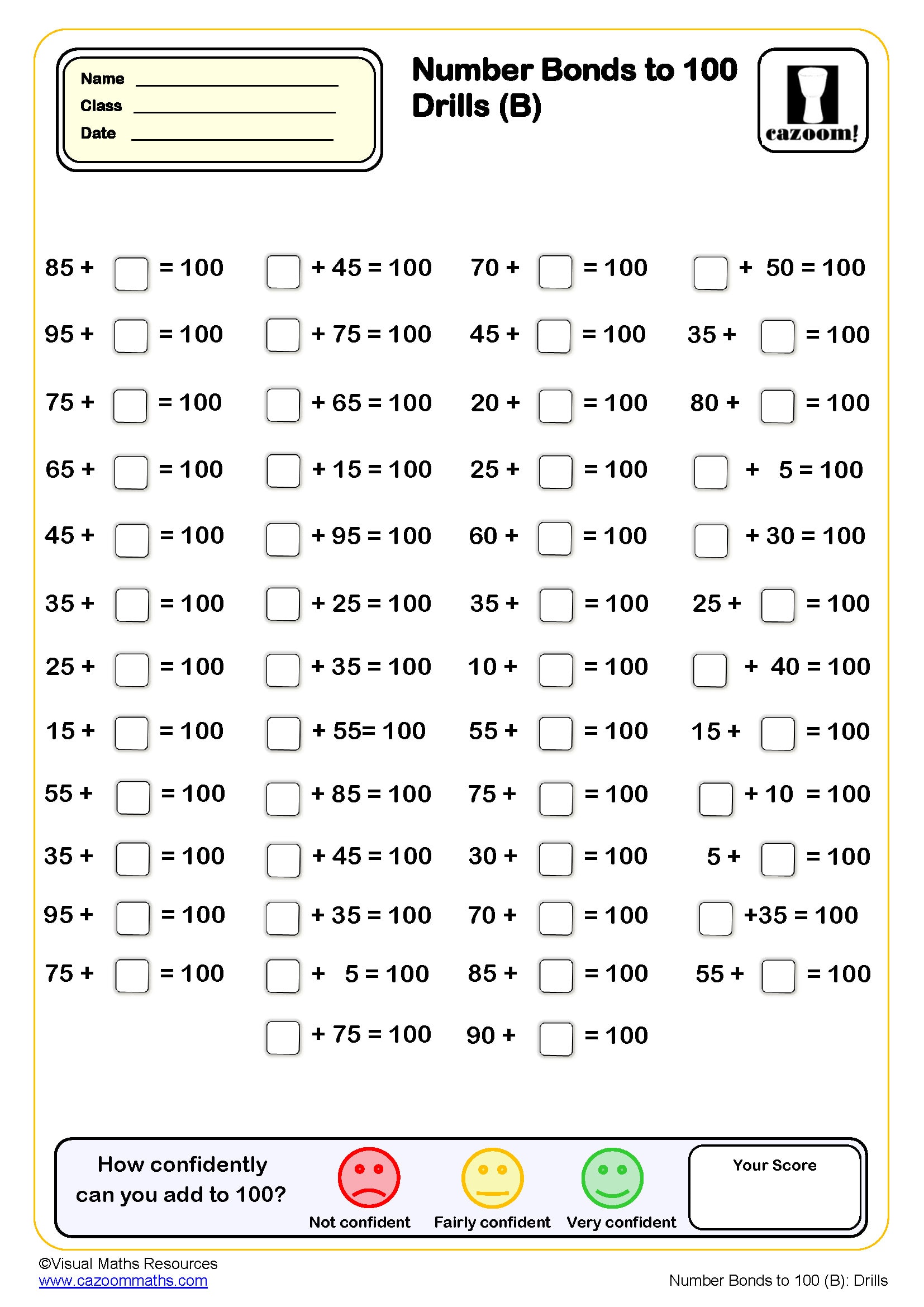
Number bond to 100 Drills (C) (10 questions)
Year groups: 2
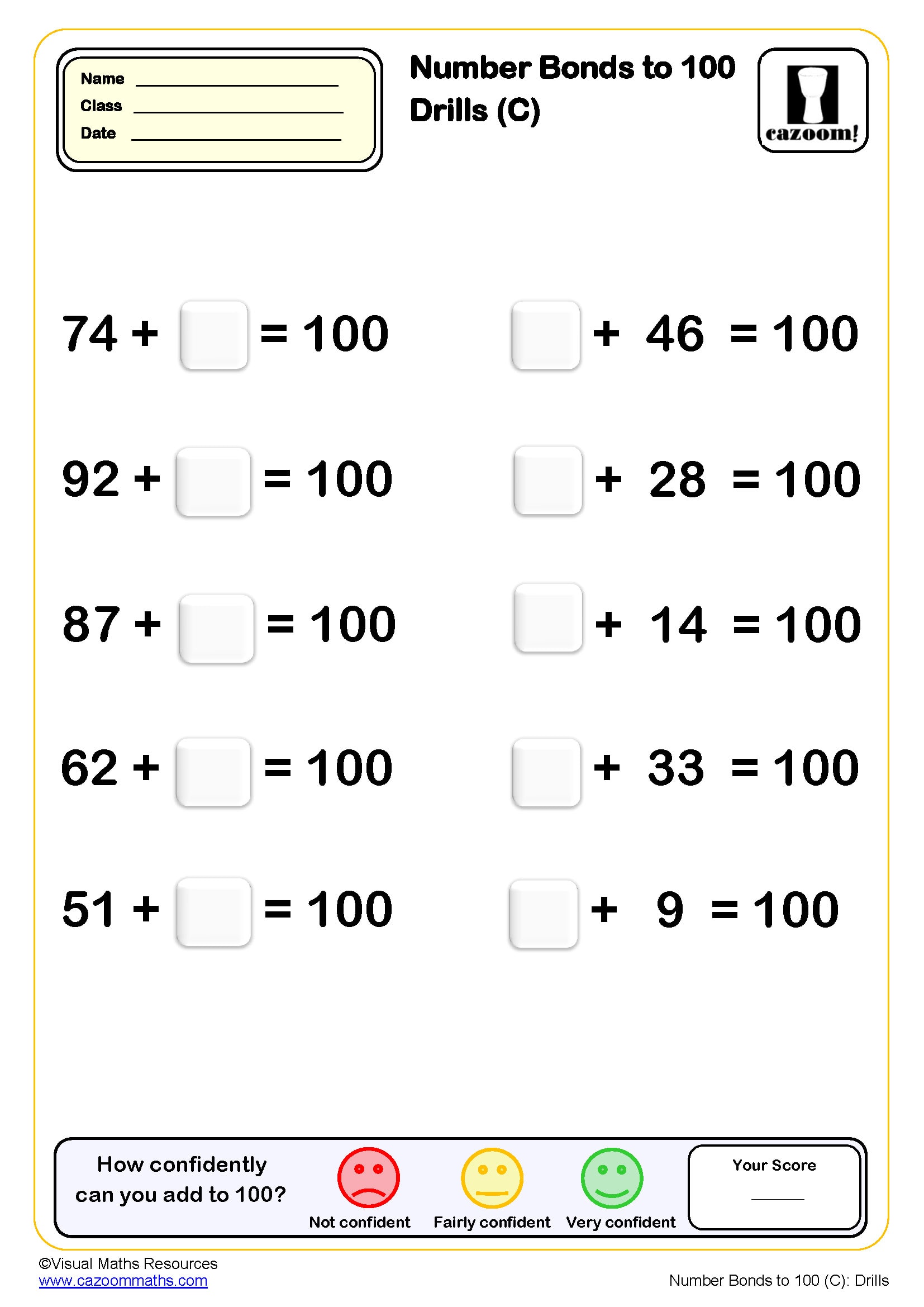
Number bond to 100 Drills (C) (20 questions)
Year groups: 2
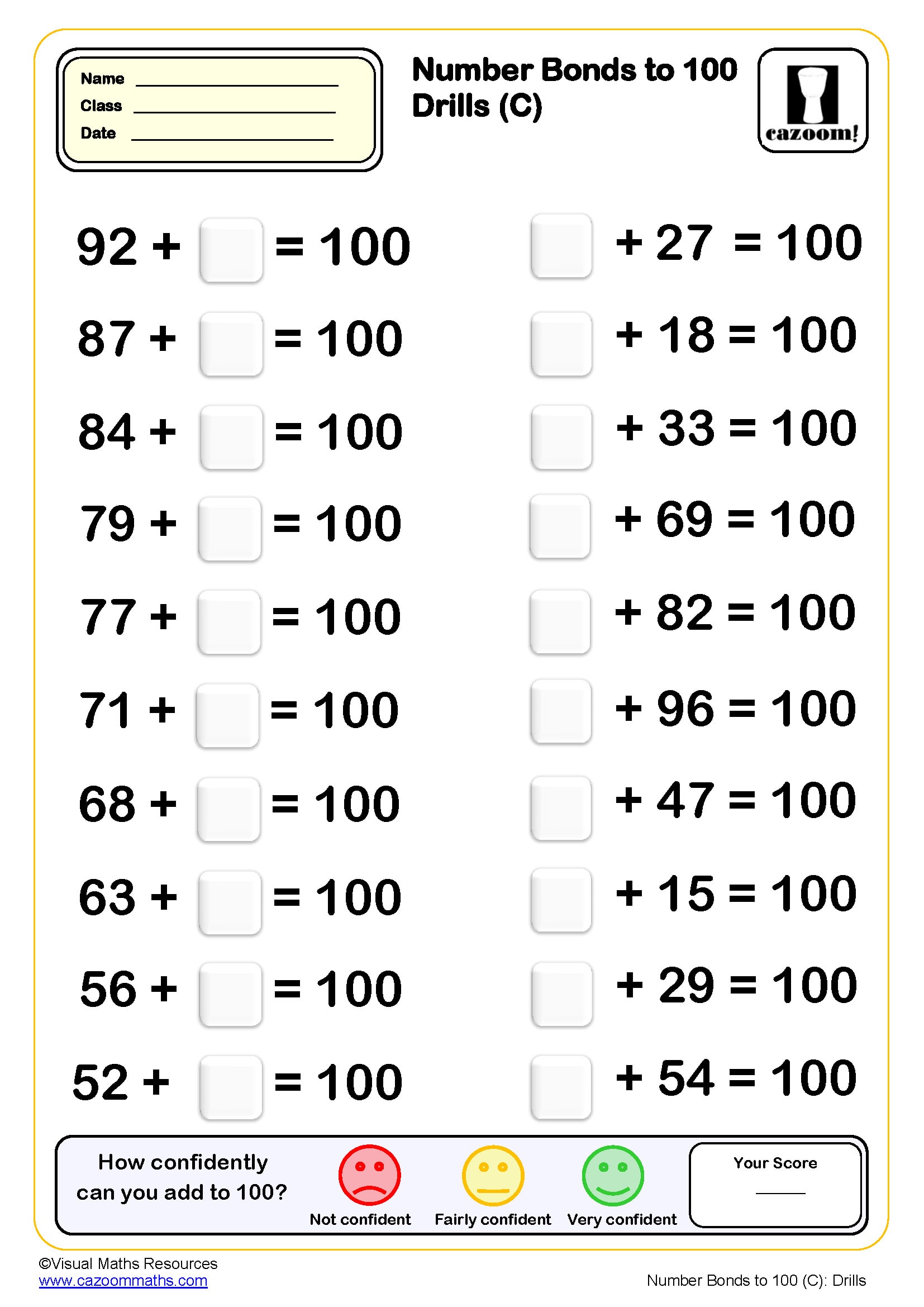
Number bond to 100 Drills (C) (50 questions)
Year groups: 2
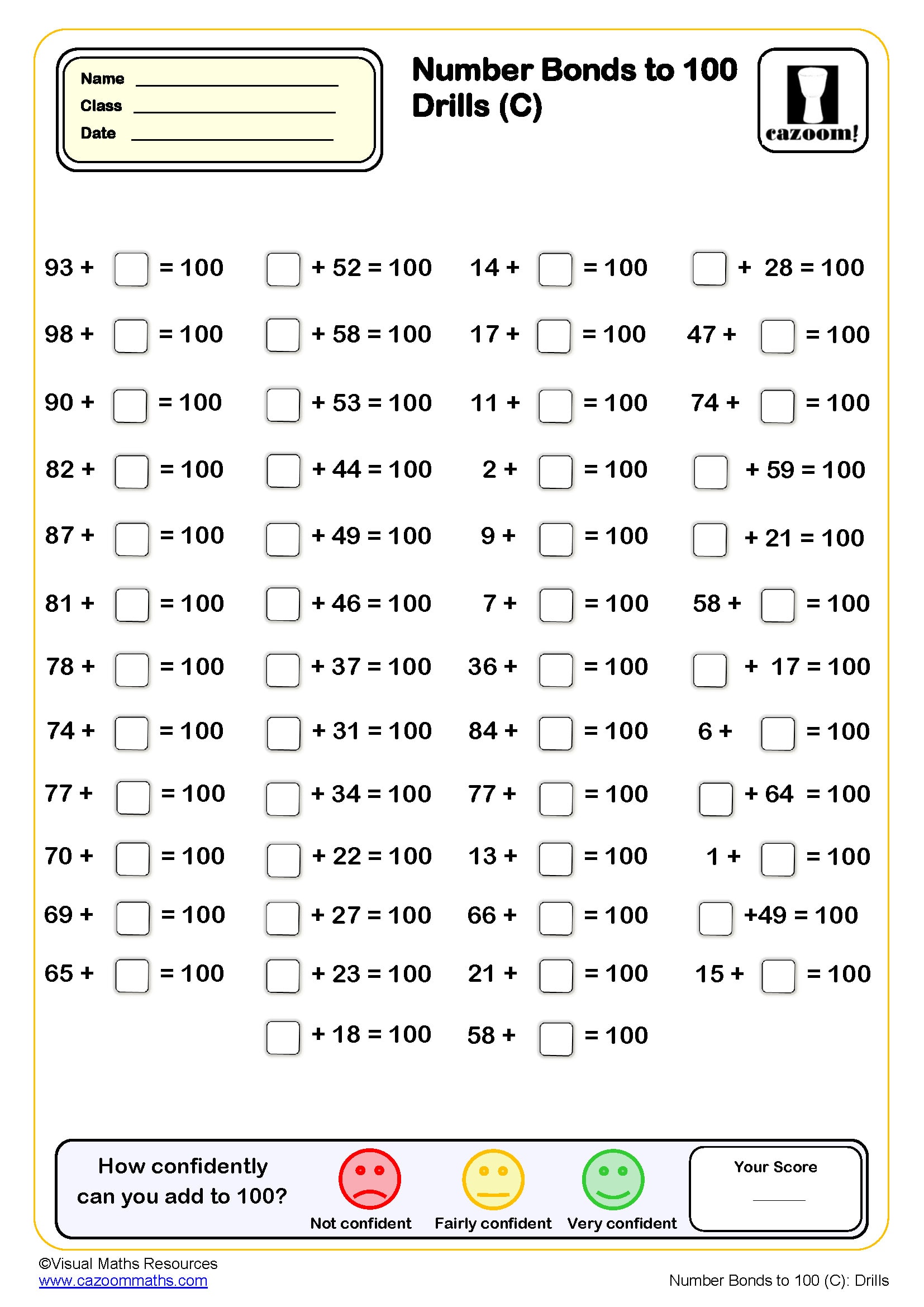
Number bond to 50 Drills (A) (10 questions)
Year groups: 2
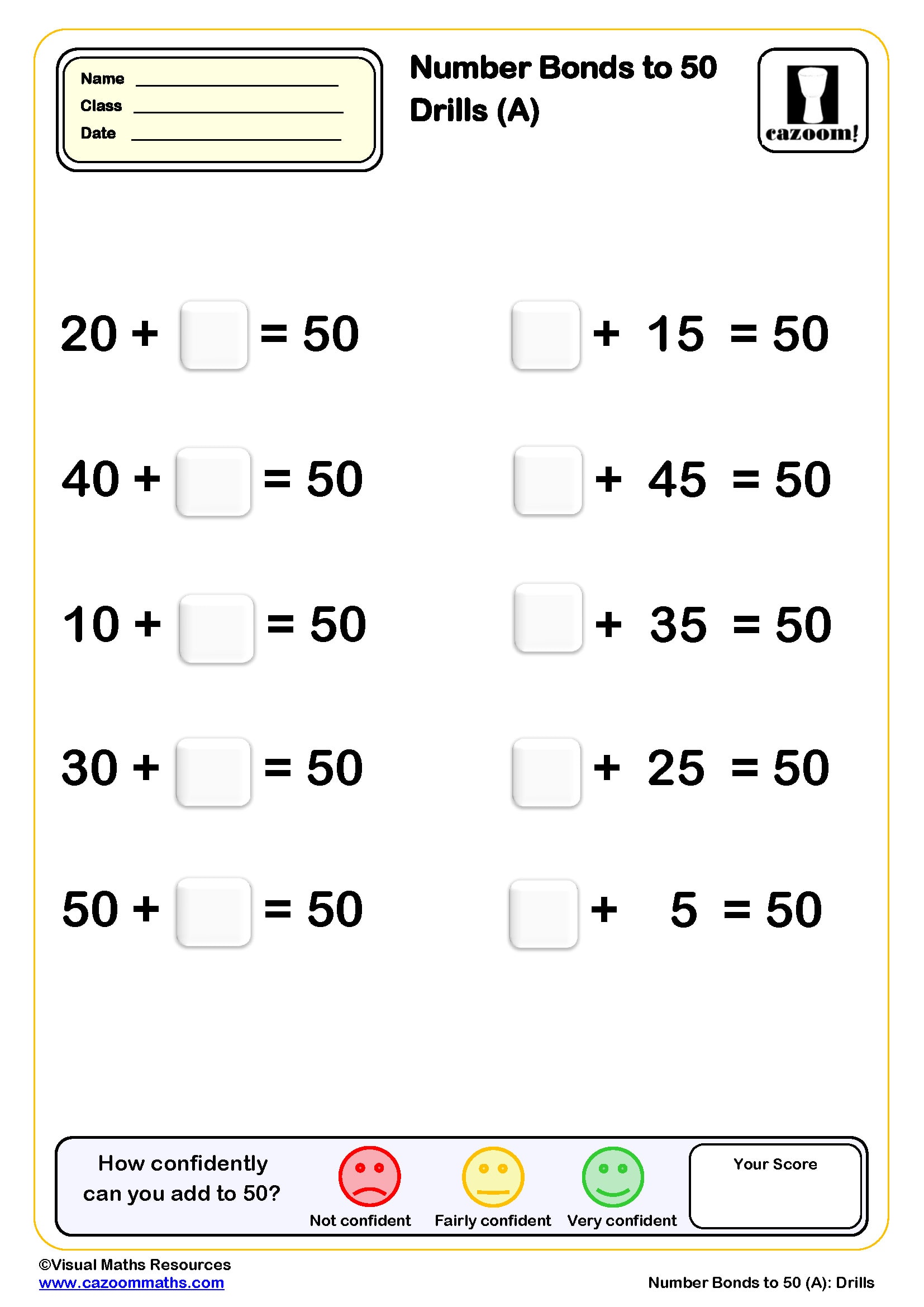
Number bond to 50 Drills (A) (20 questions)
Year groups: 2
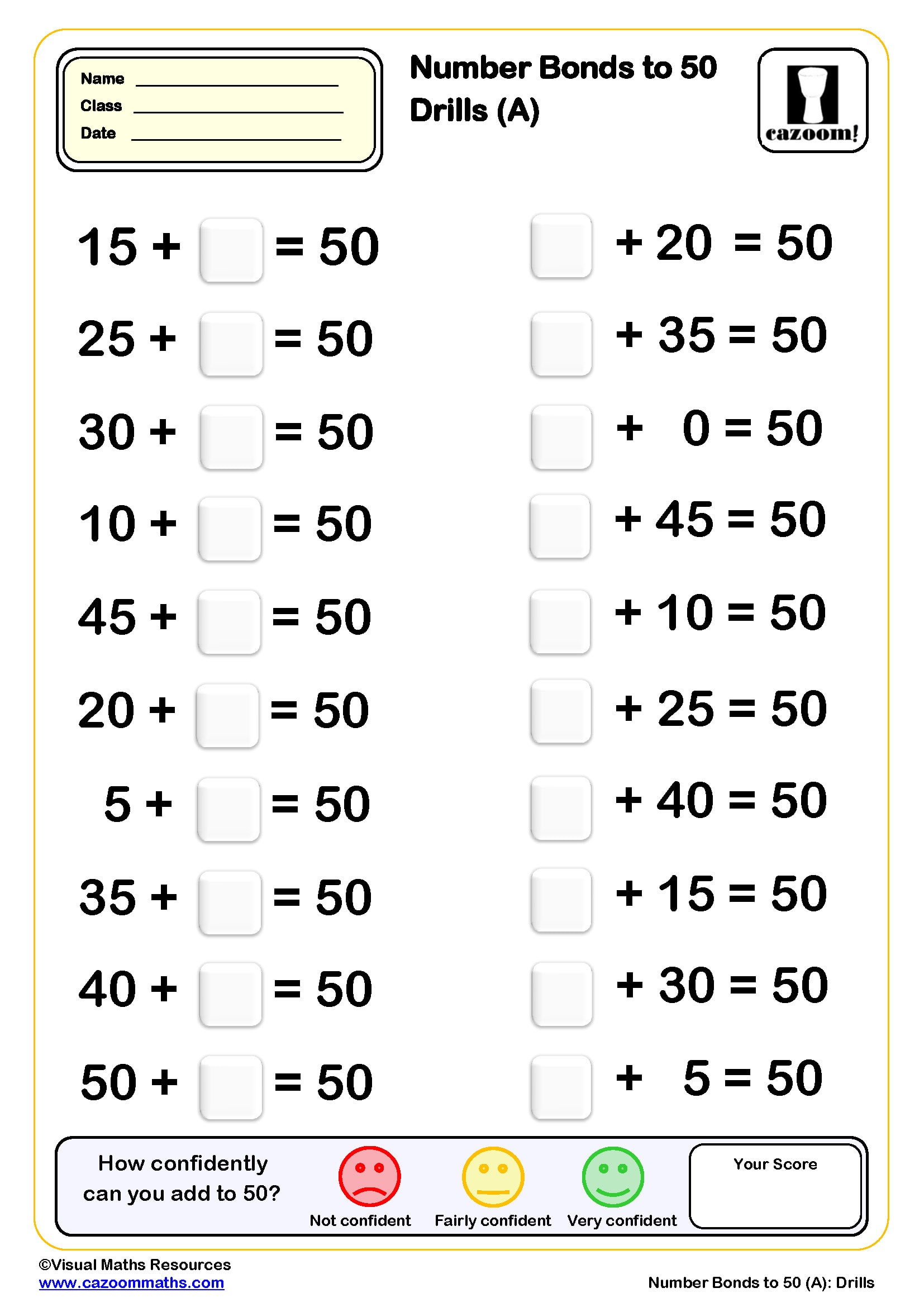
Number bond to 50 Drills (A) (50 questions)
Year groups: 2
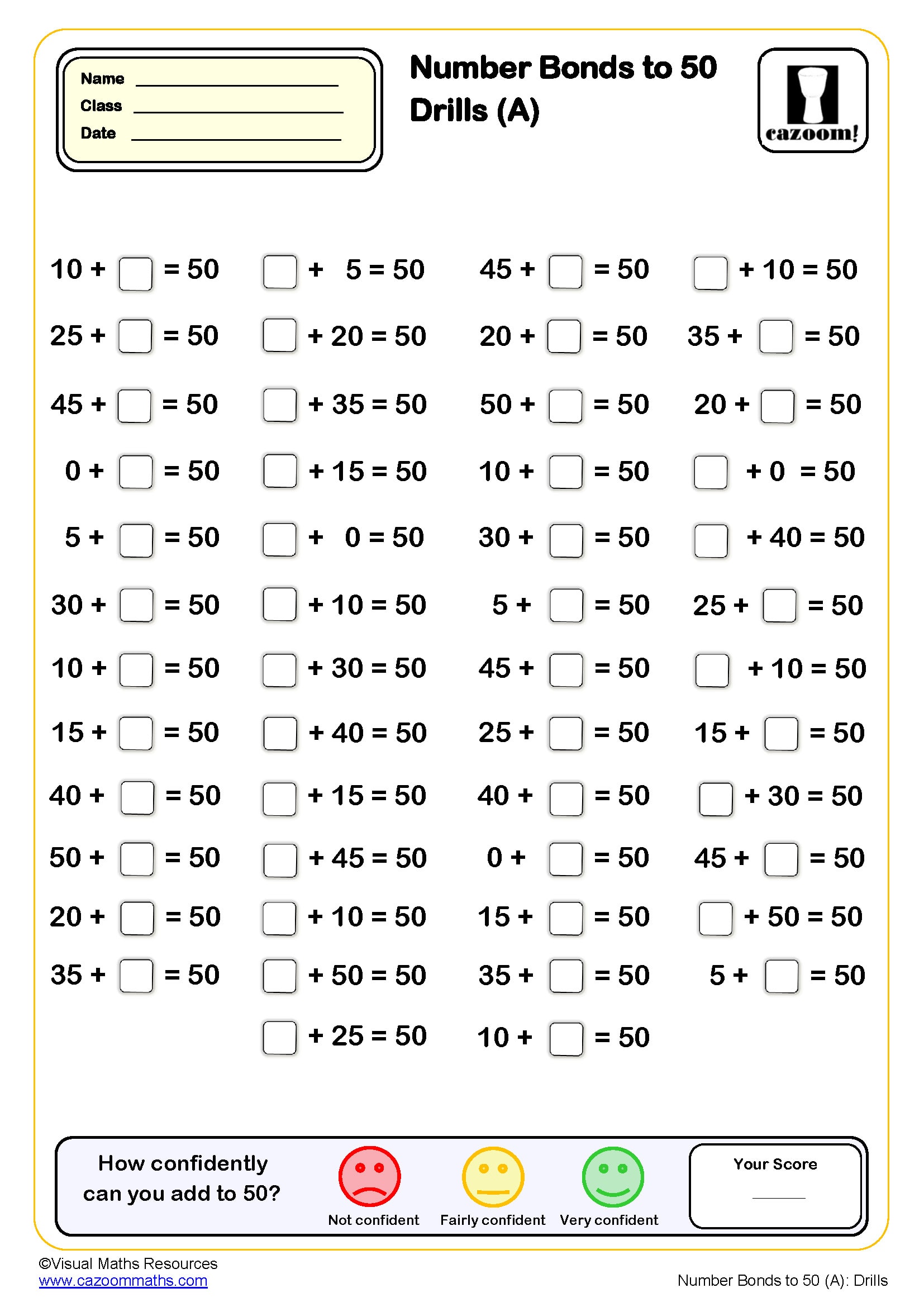
Number bond to 50 Drills (B) (10 questions)
Year groups: 2
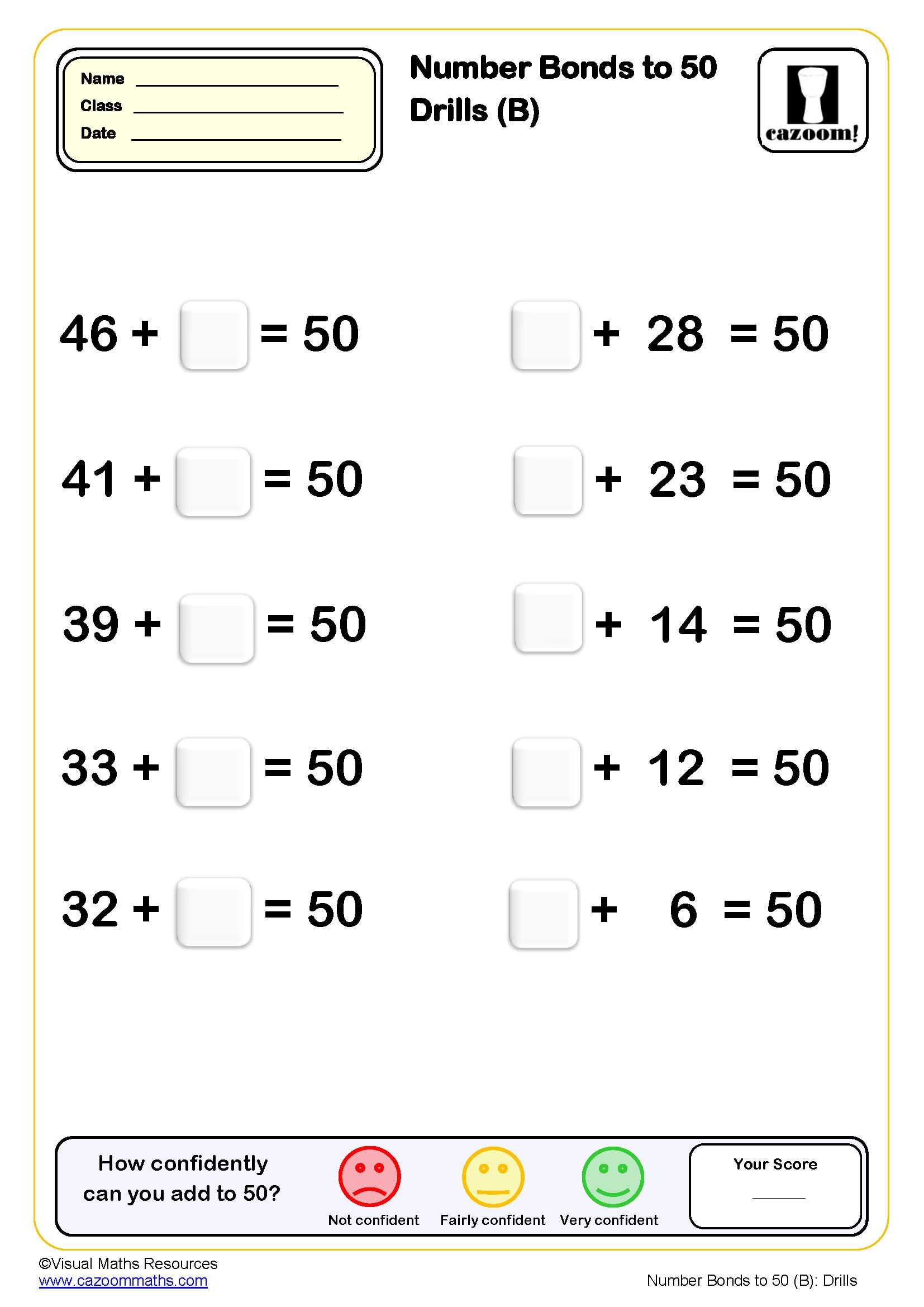
Number bond to 50 Drills (B) (20 questions)
Year groups: 2
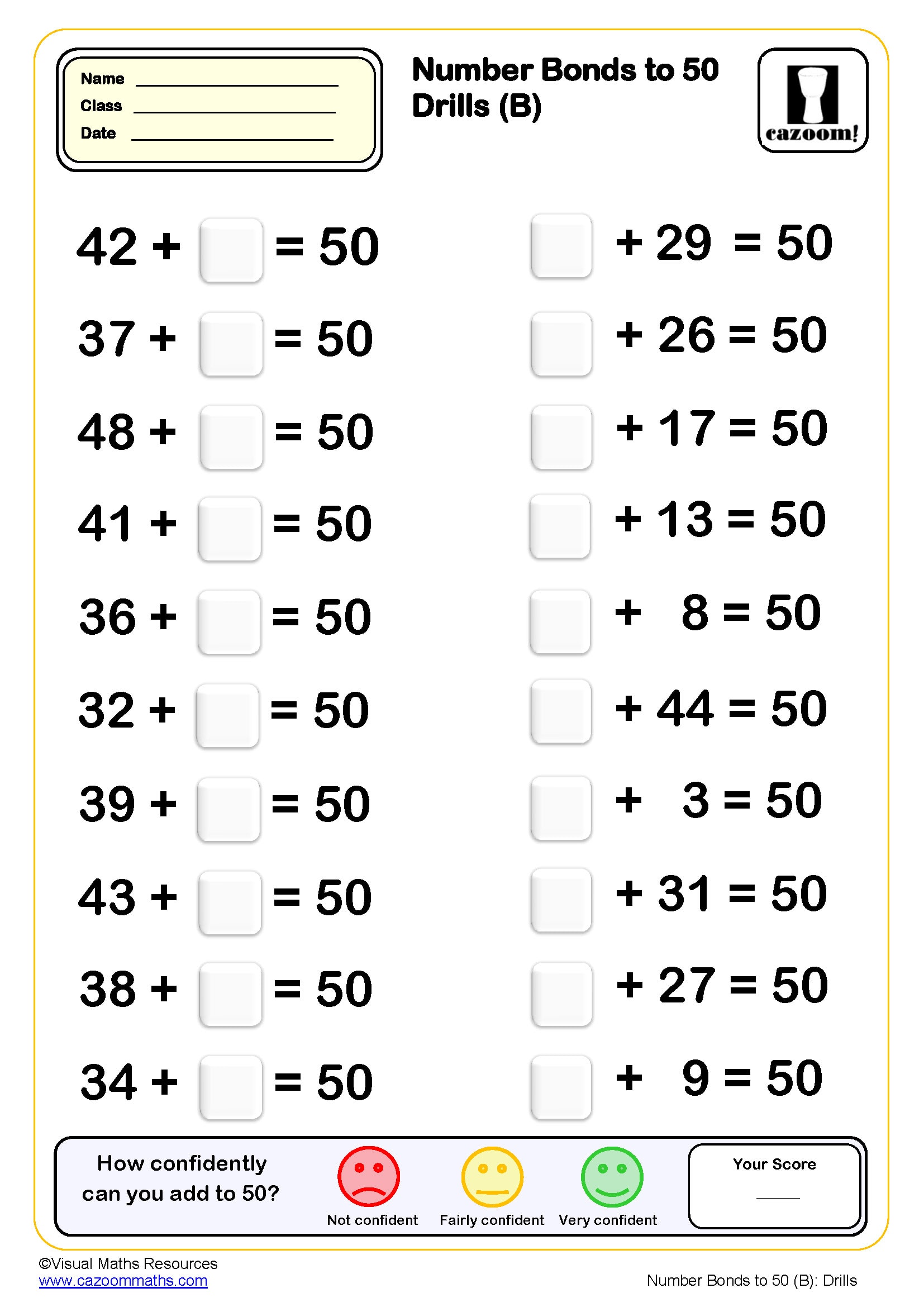
Number bond to 50 Drills (B) (50 questions)
Year groups: 2
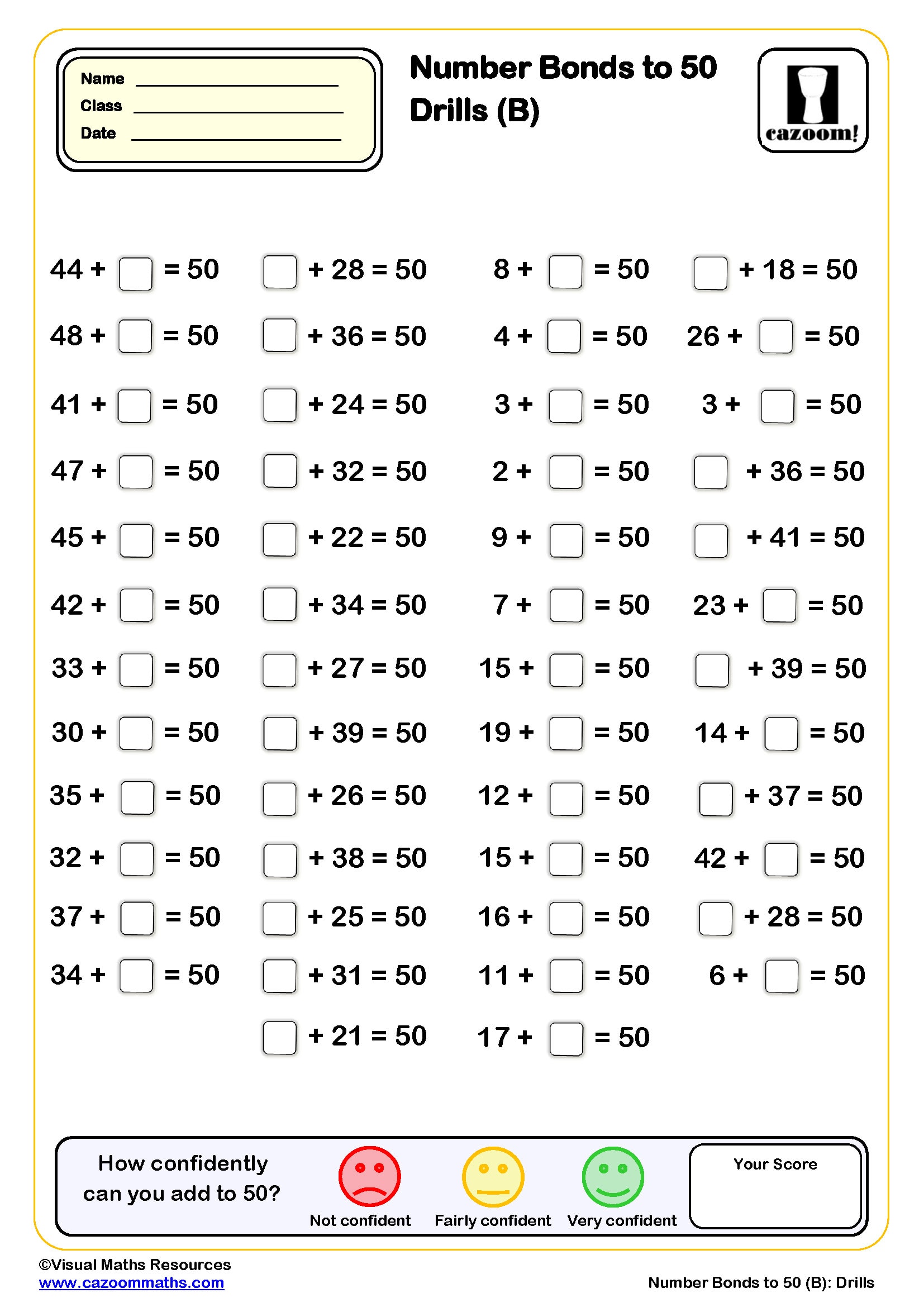
Making 1000 with 3 numbers using multiples of 10
Year groups: 3
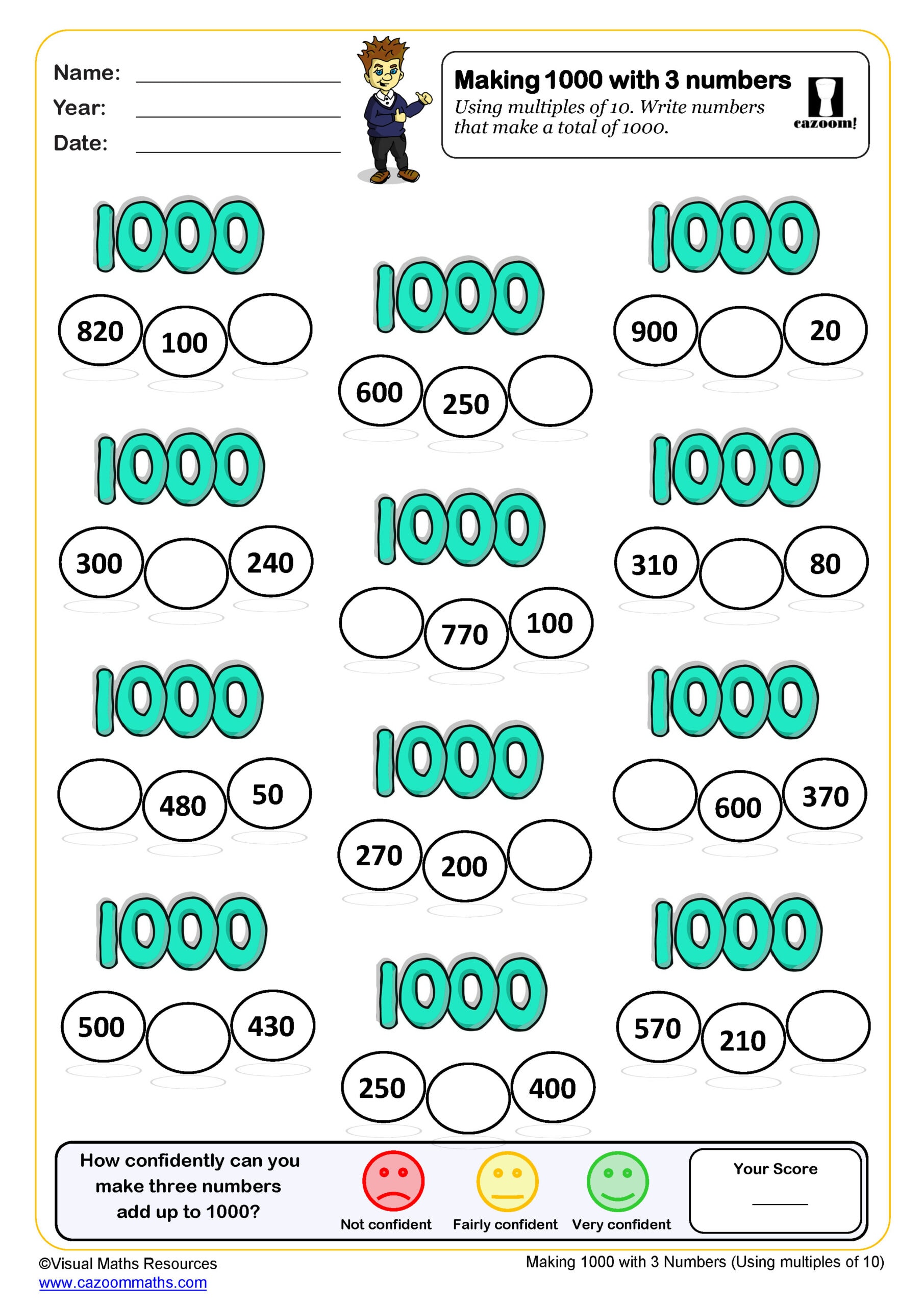
Making 1000 with 3 numbers using multiples of 100
Year groups: 3
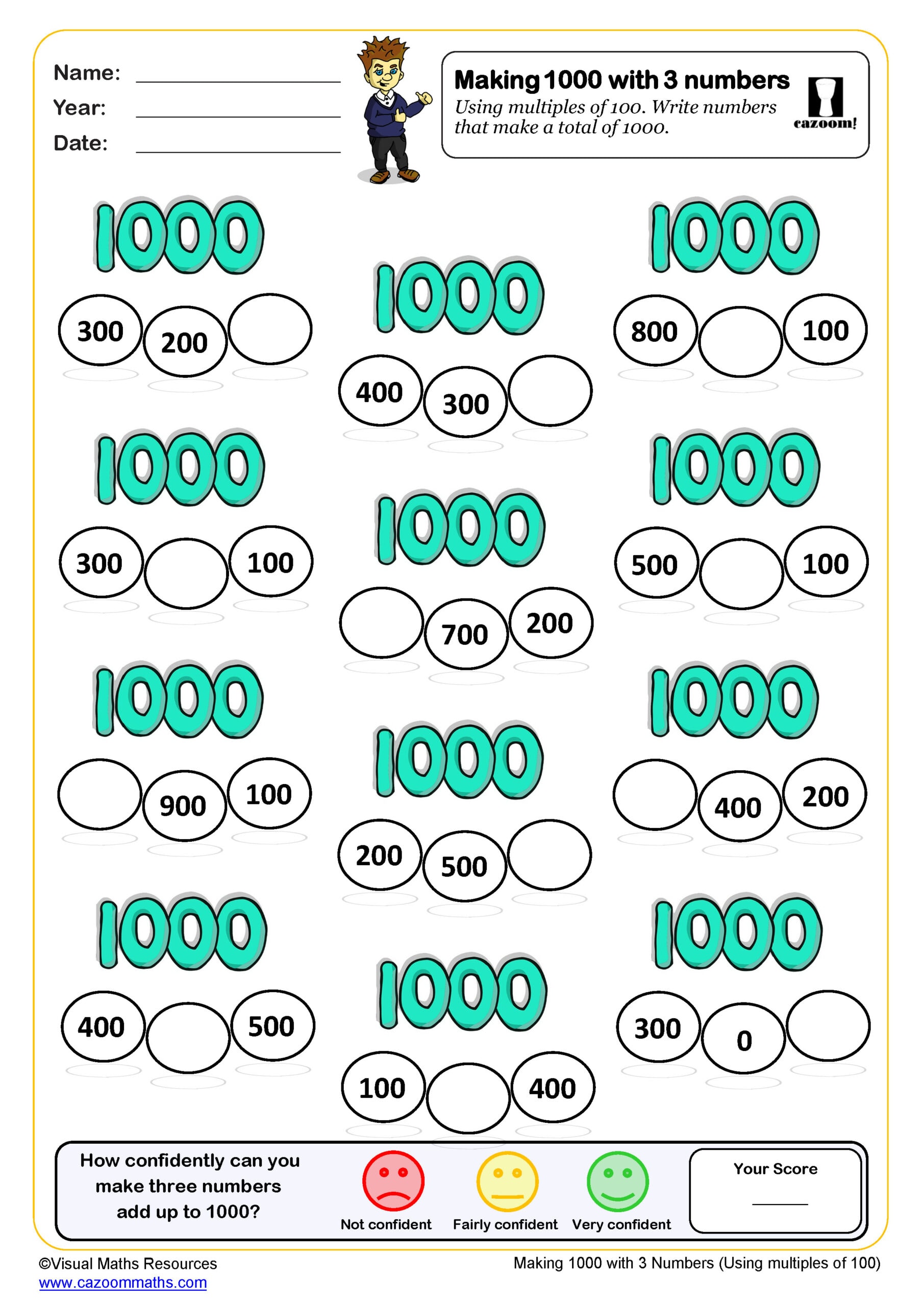
PRINTABLE PDF NUMBER BONDS OVER 20 WORKSHEETS WITH ANSWERS
Check out and download our Number Bonds Worksheets PDF which will help your students learn about the basic mathematical equations related to numbers and number bonds. Topics covered in these maths worksheets include – missing number addition problems, number relationships, the sum of different numbers, figure out the missing numbers in a bond, etc. These worksheets are created in easy-to-download PDF format, include answers, and are designed to help young learners develop problem solving skills related to numbers and they will also be able to determine a missing number from a bond. These worksheets are excellent resources for maths drills that will make the learning process fun and interesting!
Understanding The Concept Of Number Bonds
Number bonds are foundational concepts in mathematics that help children recognise relationships between numbers. Simply put, number bonds illustrate how numbers can be split apart and combined. For example, the number bonds for 10 include pairs like 1 and 9, 2 and 8, 3 and 7, and so forth. By understanding these combinations, children develop an intuitive grasp of addition and subtraction. This knowledge aids in mental arithmetic, as children can quickly deduce that if 7 + 3 equals 10, then 10 – 3 must equal 7. Mastering number bonds at an early age equips children with tools to tackle more complex maths problems with confidence.
What Is Number Bonds Over 20?
Number bonds that go over 20 are pairs of numbers. When added together they give a total greater than 20. This is a way for people to break down numbers into parts so their brain can easily do maths with them. For example, the number 25 can be cut into a bond of either 20 and 5, or 15 and 10, along with other combinations. As children learn about these special relationships between numbers it will improve their mathematical fluency. Because it helps them understand the relationships between larger numbers in everyday situations, they’ll be able to quickly perform equations in their heads.
Use of Number Bonds Over 20 In Real Life
A very handy thing to know is number bonds over 20. In everyday life, they can prove to be super helpful. Say you’re at the store and have a £25 note on you, an item you want costs £17 and you’d like to know how much money you’ll get back. Knowing the bond between 17 and 8 will immediately tell you that it’s £8. The same idea applies when splitting a bill with friends. If it’s for £23, knowing that 23 can be split into 10, 10, and 3 allows for a quick division. It can even make games more enjoyable for children. Their experience when playing games that require scores or collecting items will be better because they can quickly calculate using number bonds. Essentially, having this knowledge equips people with the ability to handle numerical problems in their daily lives with ease.